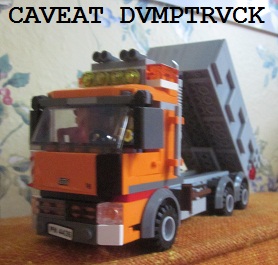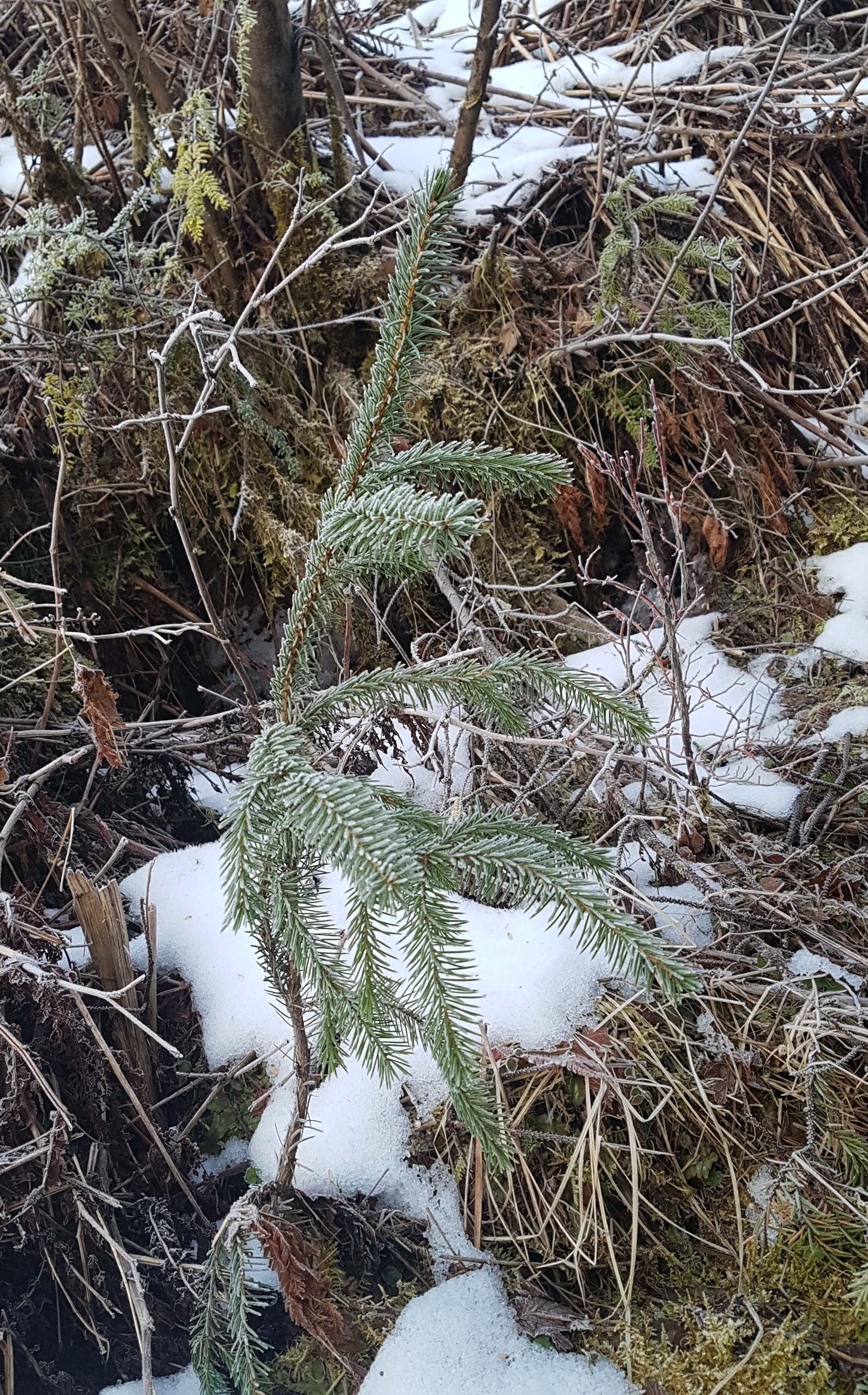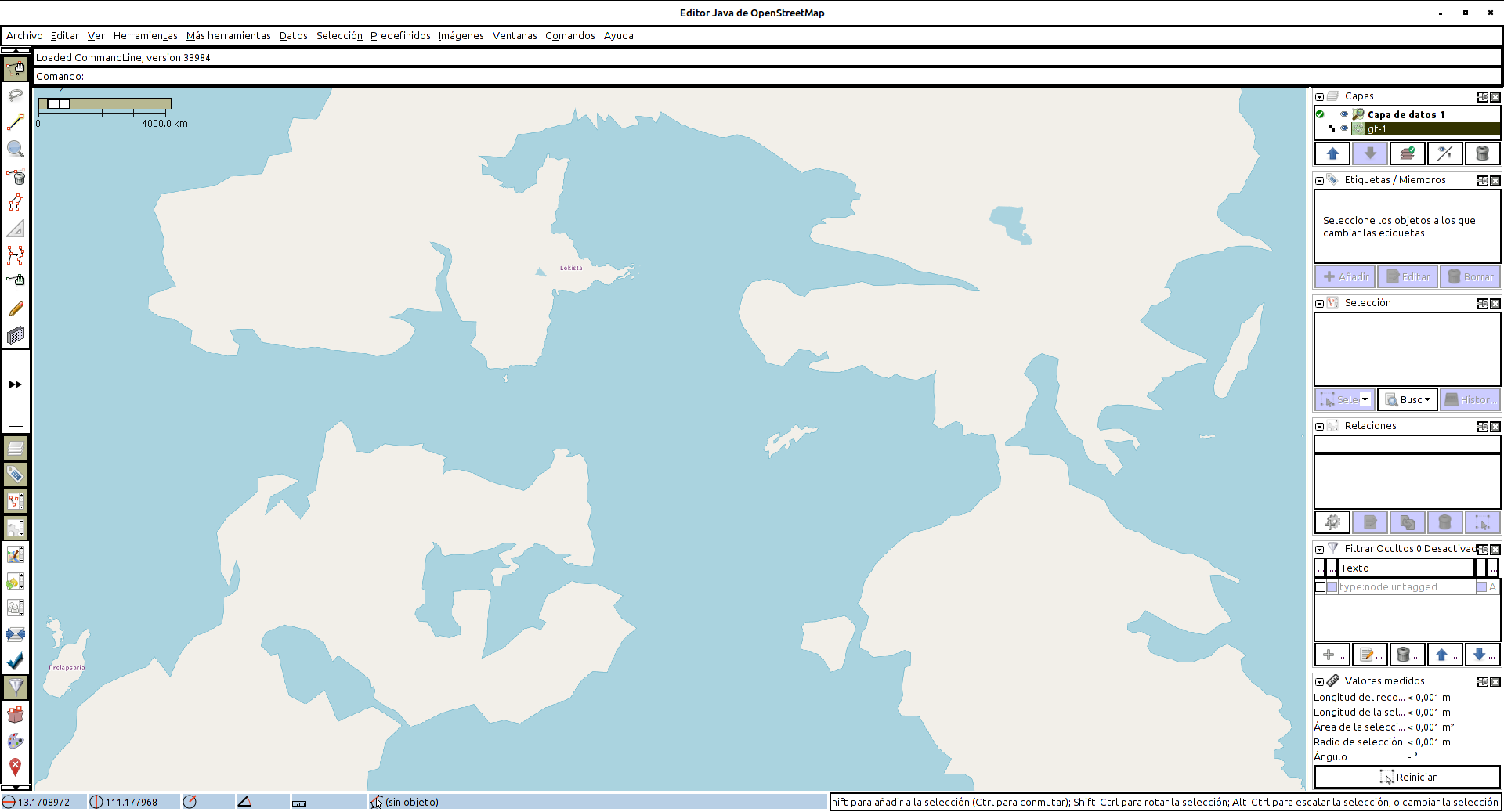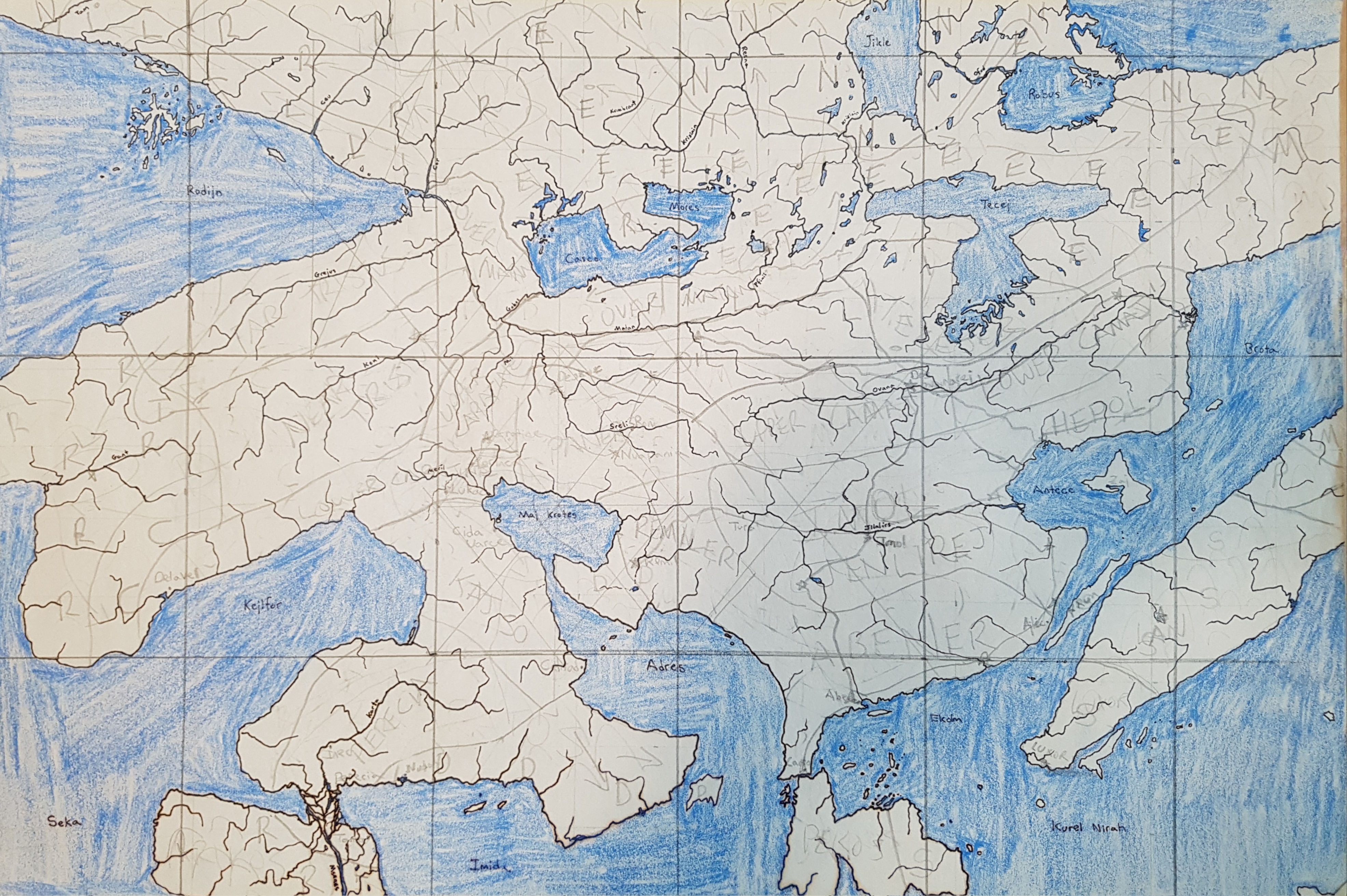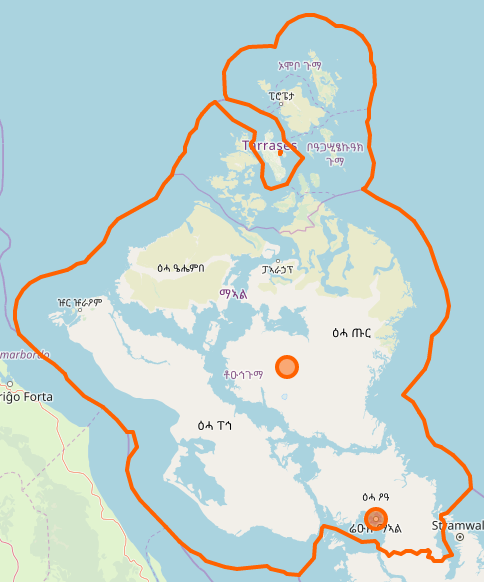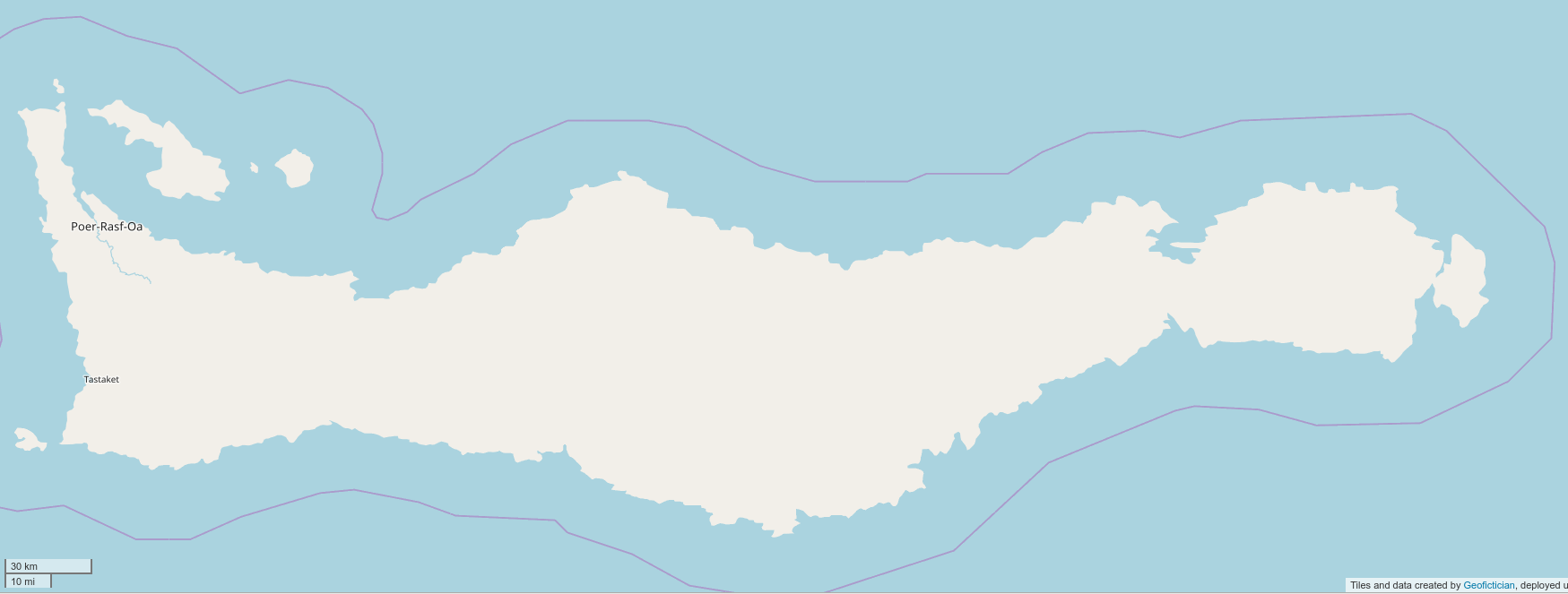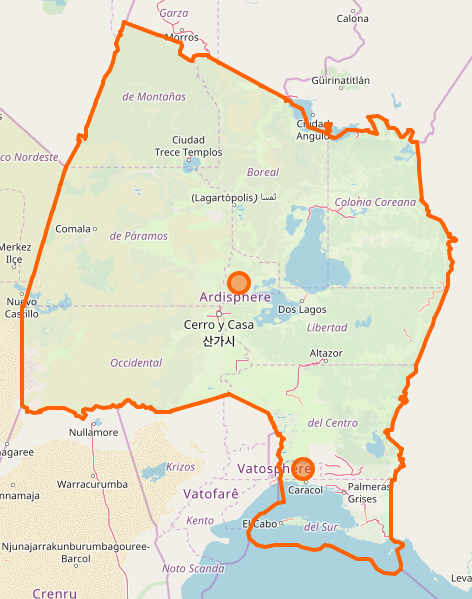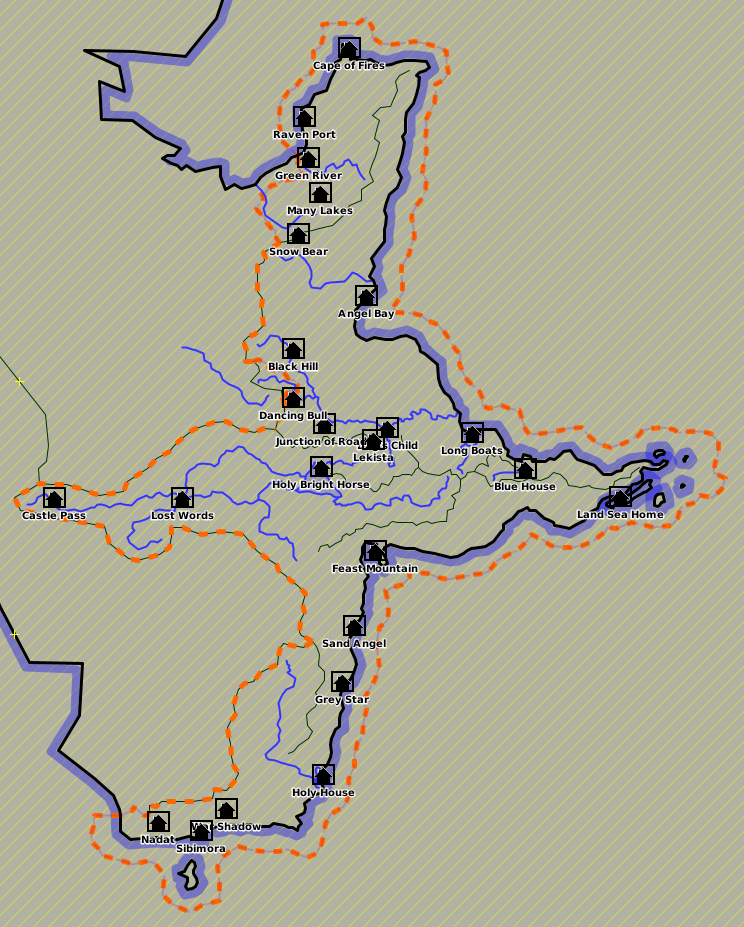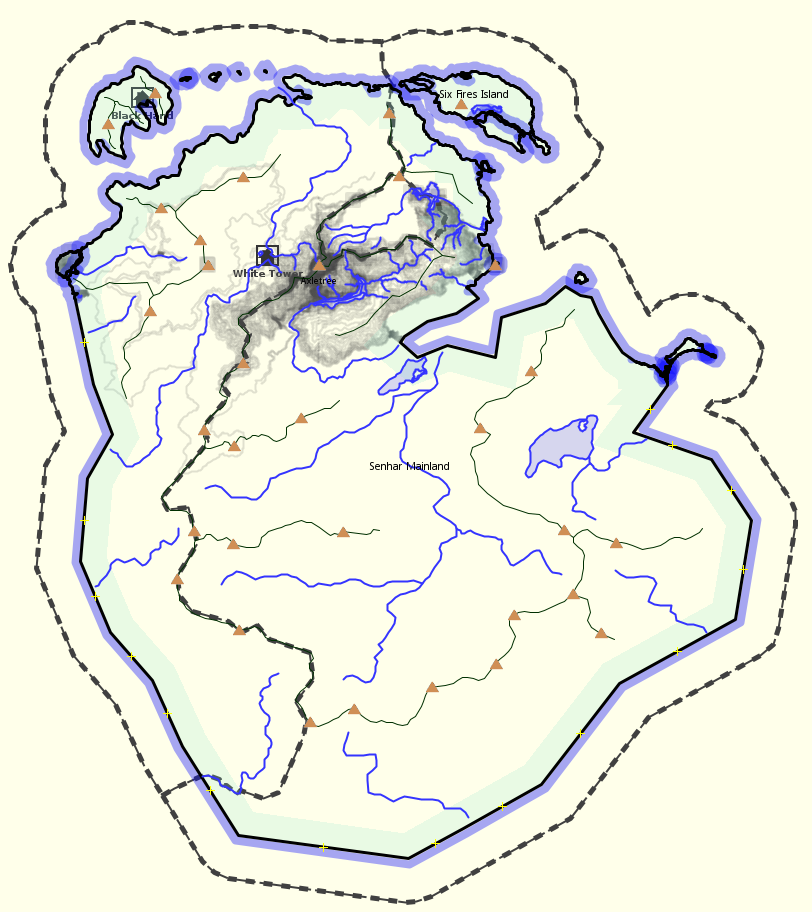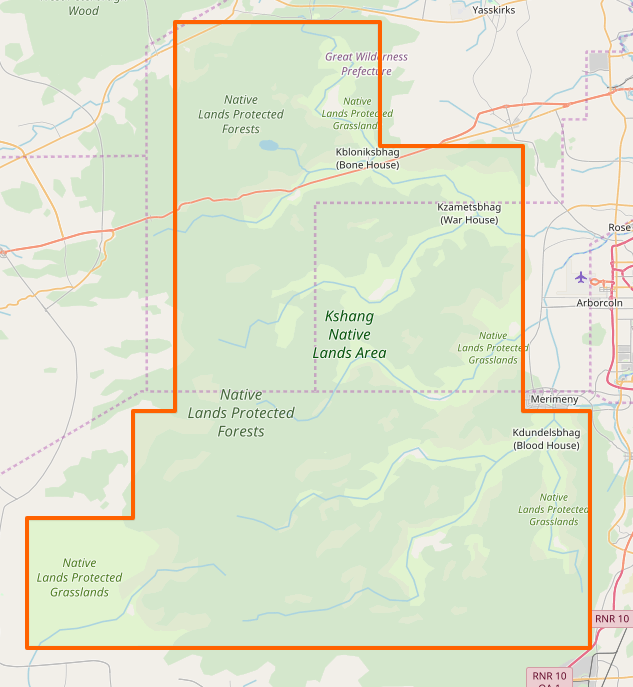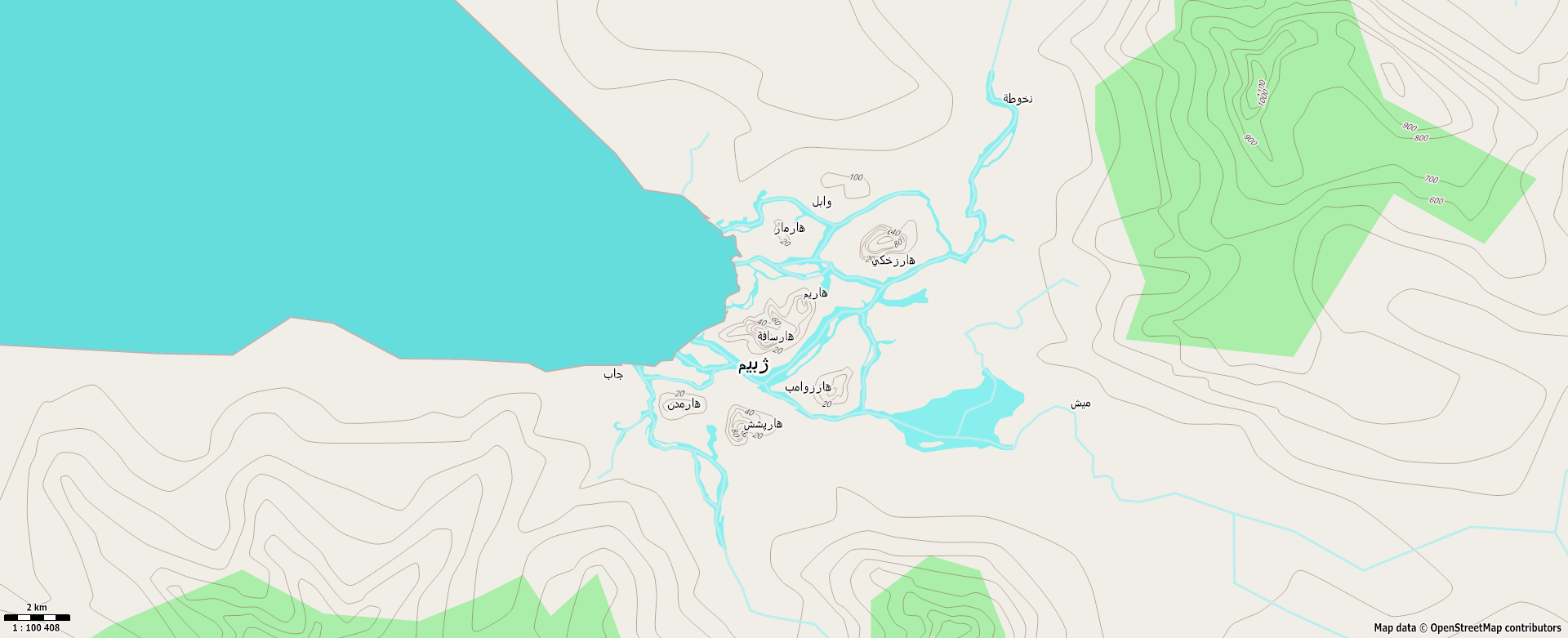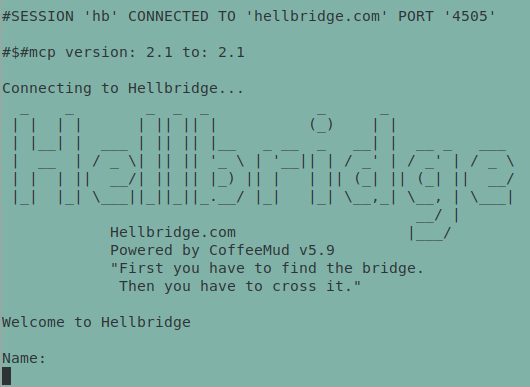I spent the day trying to learn a new bit of software. Results were mixed. I documented the more positive aspects of the experience on my other blog, but I didn’t mention the more frustrating aspects.
Still, I shouldn’t be so negative, right?
![]()
Category: Banalities & Journaling
Caveat: Tree #450
This is a guest tree from the past. Its picture was taken New Year’s Day, 2009, in the Gangnam District in Seoul, looking west along Tehran-no (Tehran Road, a very posh address in the city).
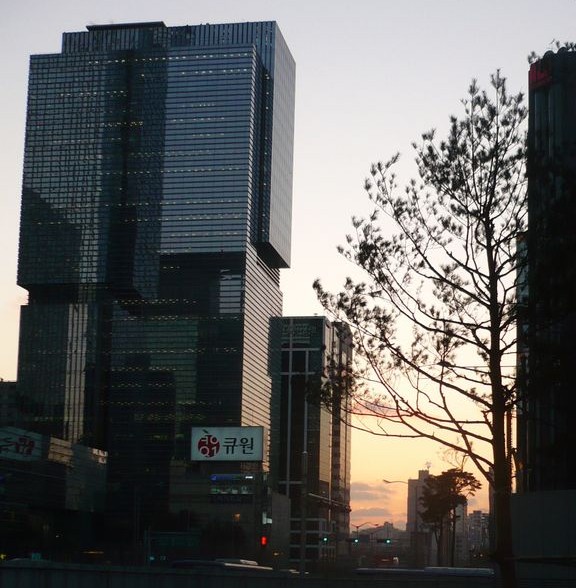
![]() [daily log: walking, 2.5km]
[daily log: walking, 2.5km]
Caveat: Link-rot
I have been working on a project, lately, involving the back-end of this here blog. It keeps me occupied while I wait for the galley proof for my upcoming book publication, and while I wait for my radishes to grow.
Over time, there is a thing called “link-rot” – links to websites become stale due to changes on whatever site is being linked to. Sometimes videos disappear, sometimes new articles get re-named by their hosts, etc.
So part of keeping a long-term blog functional is going back and fixing those rotted links – either replacing them, or simple putting a note, “link no longer works.”
My blog has accumulated a fair number of rotten links over its 15 years and 7500 entries.
But by far the worst offender is the vast number of broken “internal” links – links from one blog entry to another, including to my many pictures. The reason I have this problem is because I had to abandon my previous blog-host two years ago and move to a self-hosted version of this blog. I’m happy with that decision, but it means that 1000’s (yes 1000’s!) of internal blog links from before 2018 do not currently work. Perhaps if you’ve visited older entries, you’ve noticed this.
Anyway, I’m trying to fix all this link-rot – both the external and internal variety. It’s very tedious work – there is no magic “find-replace” that can do it, because the format differences between the old links and the new links are arbitrary.
Ah well. It keeps me socially isolated. Which is, apparently, a goodly thing, these days.
![]()
Caveat: Have Eat Cake
One of my students once wrote a very memorable phrase in English just bad enough to sound gnomically brilliant:
“Cake’s existence is have eat cake.”
I have never forgotten that phrase.
So today I made a chocolate cake. It came out pretty good.
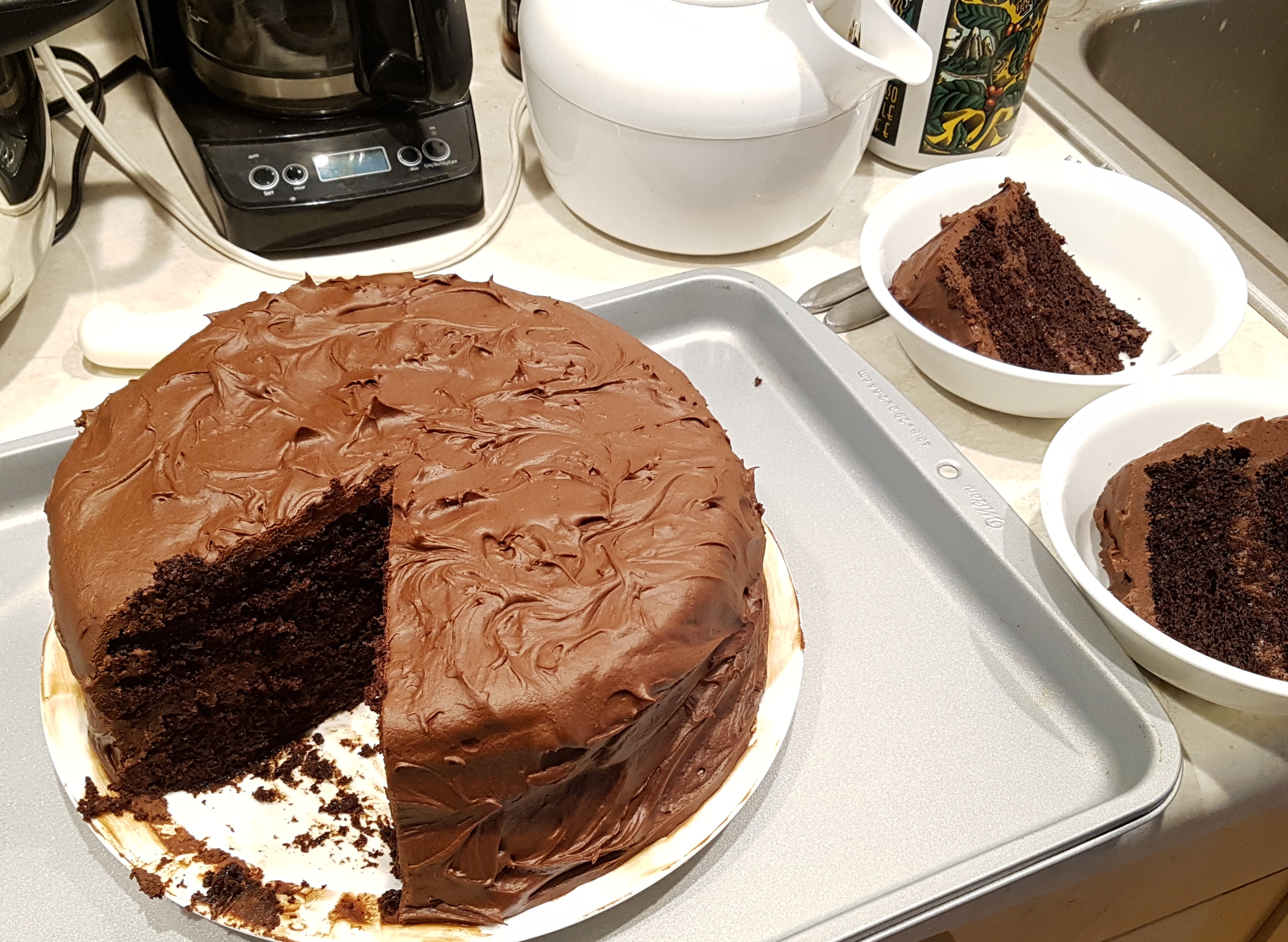
![]()
Caveat: seeds
I put some seeds in one of my planters.
Later in the day Arthur asked what I was doing. I told him, “Checking my seeds. Nothing yet.”
“Nothing?” he asked.
“Right. I think to grow a garden, I need to be more patient.”
Arthur found this amusing.

![]()
Caveat: Tree #446
Caveat: dirtbound
I spent part of the day watching Arthur climb a ladder. Again. The guy loves ladders. I guess it is as close as he can get, these days, to his time as a pilot. I think he has the opposite of acrophobia (fear of heights) – let’s call it acrophilia. I have to accept with equanimity that he can’t really be controlled – I have no power of persuasion with respect to this issue, as far as I can figure out. So what can I say or do? He knows how I feel about it, but seems determined that this will be his means of exit from the world. Or maybe not. He’s got luck on his side, anyway – this is in fact his “reason” why it’s not dangerous. So that was that.
But another part of the day, I spent making dirt. I want to plant things in my greenhouse. There isn’t much quality dirt just lying around. Buying planting soil is super expensive. So… I have to make some dirt. Find some dark loamy stuff from an excavator-turned-up stump. Add some sand, some ash from the fireplace, some sawdust. Maybe this will be adequate planting soil. I don’t know. I guess I will find out.

![]()
Caveat: Alarming Creatures
I found a folder full of old drawings and sketches and maps I did in elementary school.
I remember drawing this one in 6th grade – that would have been around 1976.
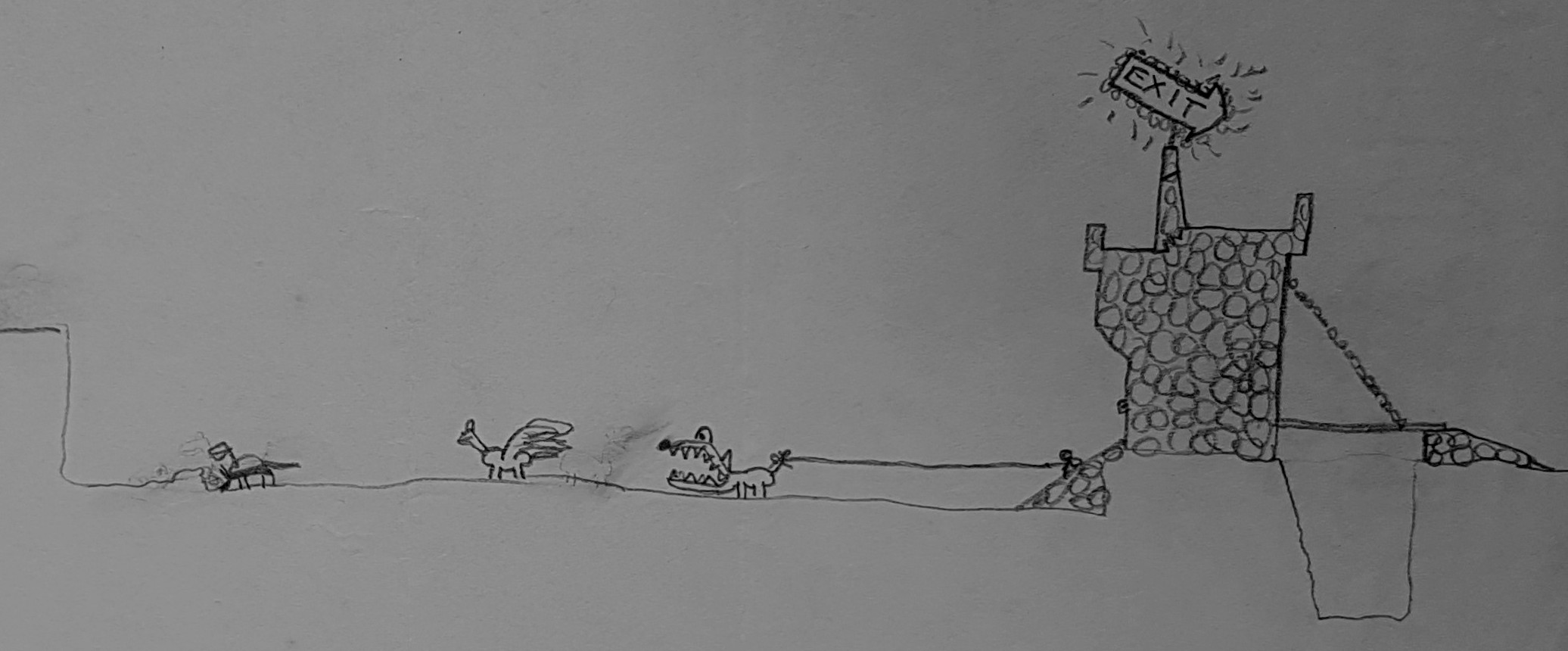
![]()
Caveat: Starman
It is a little known fact that Arthur once appeared in a major Hollywood movie.
That movie was Starman, which was released in 1984. I knew this fact, but I’d never seen the movie.
Last night, he and I watched the movie.
Here is the scene where he appeared – I took a photo of the TV screen.
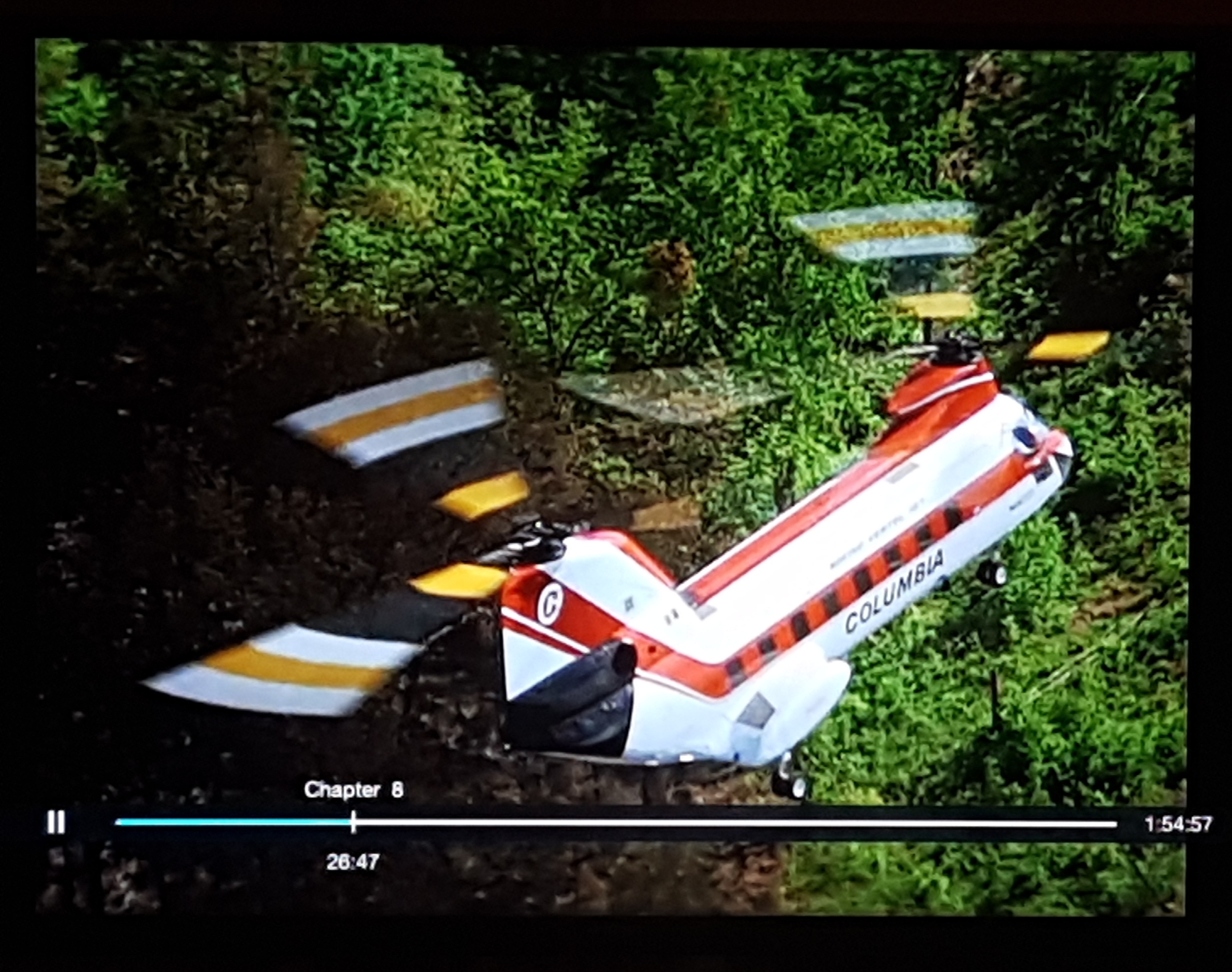
Arthur claims you can see his white hat in the pilot’s window-bubble. I’m not sure – the resolution on the photo-of-the-TV-screen is too poor to judge either way.
![]()
Caveat: https://
Probably most of you won’t even notice, but as of about 3 pm this afternoon, Alaska Daylight Time, this here blog moved from “http” to “https”. This is a substantial accomplishment, that has taken me two years to get around to doing. I had things running well, and so was afraid to mess with it – as they say, “If it ain’t broke, don’t fix it.”
But I finally bit the bullet, in the wake of my frustrating experience with my other server over the last few days. In essence, the work on that server functioned as a “practice run” for what I needed to do.
Why make this change? Well, “http” is being phased out in favor of “https”, all over the online world. The latter is “more secure” by some standard I actually don’t really understand, but it’s become the norm for well run and “safe” websites, so as long as caveatdumptruck.com remained on “http”, it was in danger of ultimately being ostracized from the respectable part of the internet. When I left my prior blog host in 2018, it was because they were forcing me to move to “https”, but at that time I wasn’t ready. So now I finally got ready, and did it. It’s not that I disagreed with their wanting me to move, I disagreed with their having taken the decision for me, without consultation.
If done correctly, the migration should have zero impact on the user experience. The one casualty was the free little “flag counter” I’d managed to find – I’ll have to find another that’s “https” compatible.
Happy web surfing.
![]()
Caveat: Apocalypse, Craig
Arthur and I went into town for Thursday shopping. The pizza joint where we generally go for lunch was open but “dining room closed.” They were mandated by the State to not let people in their dining room. So they delivered – to our car in the parking lot. This is because of fears of the virus.
The library was closed. Same reason.
The grocery store was open, but less busy than usual. They had an additional, non-virus-related problem: their freezers and refrigerators had ALL broken. Apparently all running on the same compressor. So: no dairy products, no frozen goods, and the fruits and vegetables were quite spartan, and sitting on piles of ice.
Meanwhile, due to people hoarding and stockpiling because of the virus, shelves of basics like rice, flour, toilet paper, etc., were all empty. Cleaned out.
I was scanning the horizon for the coming zombie army.
![]()
Caveat: 8 hours of sysadmin annoyance
I had a bit of an annoying two days. Yesterday, I was pursuing my hobby of building websites, by trying to build out a prototype of a website for a friend. An early step in this process is creating a subdomain on one of my domains (e.g. caveatdumptruck.com is this blog’s domain, and something like “blog.caveatdumptruck.com” would be a subdomain). This should be an easy step, but it’s crucial because you don’t want to mix a new website up with any existing websites on a given domain.
Instead, somehow the versions of some of the software running my web server got “out of sync” – that’s my best guess as to what happened. There’s a lot of software on the “back end” of a website: apache (the “web server”), php (the thing that makes webpages “interactive”), wordpress (the blog publishing tool that can also be used to build not-so-bloggy websites of various sorts), certbot (the free certificate registrar that makes websites “secure” so your browser doesn’t give you alarming notices about bad guys), etc. All of these have to talk to each other. And if they have different versions, they might stop understanding each other.
So something was bad. And my whole server ended up down and all websites on it inaccessible. I spent 8 hours today uninstalling and reinstalling various bits and pieces, trying to get everything in sync again. It was really above my competency. So frustrating, because when I finally got it working, I’m not even sure how I did it.
So a 15 minute task took two days, with 8 hours this morning desperately trying to get my server up and running – this is not the main server, so my blog and map server weren’t down, but my pictures are hosted on this secondary server, as well as several sites I’m running for friends.
![]()
Caveat: Tree #437
I’ve been feeling kinda under-the-weather. I know it’s not that crazy covid thing – because I’ve had these lingering cold-like symptoms since before this thing came along. But it’s annoying. I haven’t been posting much on this here blog thingy, I know. Sorry.
This tree is down by the water on the neighbor’s property (where the house burned down).

![]() [daily log: walking, 1km]
[daily log: walking, 1km]
Caveat: Book of Caveat: Poem
I’ve mentioned this to a few people, but here it comes more “officially.”
I’ve decided to publish my daily poems.
At first, I was going to publish some kind of collection, but on reflection, I’ve decided it’s both easier and more gratifying to just publish all of them, and quality be damned. In today’s publishing environment, where anyone can publish anything, I still think I meet higher criteria than many.
I’ll have “Volume 1: Mostly in Korea” on Amazon in a few days. Meanwhile, I’m asking for last-minute feedback regarding the manuscript. Below is a “cut-and-paste” of the introduction, and the full .PDF manuscript is available here (link).
In 2016, I began writing a poem every day. Prior to that, and back to my adolescence, I had written poetry occasionally. In 2004 I had started a blog (caveatdumptruck.com); a brush with cancer in 2013 rearranged my hopes and dreams. Those factors induced new efforts at creative writing. A friend of mine had noticed a few of my poems on that daily blog, and had given me positive feedback. In particular, he liked my poems in the “nonnet” form, and so he off-handedly challenged me to write one every day. Or perhaps I challenged myself, while in conversation with him – I don’t actually recall.
By the end of 2016 I was reliably publishing a “daily poem” on my blog, and I have done so ever since without fail. Many of these poems aren’t so great – when you hold yourself to such a pace of production, quality inevitably suffers. Most of them are quite short – I often will just slap together something I call a “pseudo-haiku” if time is short or I feel uninspired.
Over a long period, however, quality seems to emerge from the quantity. My first impulse was to try to put together a “selection” of these daily blog-poems for publication, but the more I thought about it, the more I reached the conclusion that in today’s internet-mediated literary environment, this served no practical purpose. Given how the technology and business of publishing work nowadays, nothing is to prevent me from first publishing my “Collected Works” (as grandiose as that feels) and then only later publishing whatever selections or excerpts I might choose. In fact, all the poems here are already published, anyway – just in “blog” form.
These poems often reflect the moment of life that I am in at the moment of writing. Through the first two years, I was living in South Korea and working as a teacher. The poetry reflects that lifestyle. Then I moved to rural Alaska, and so subsequent poems reflect that quite different lifestyle. Throughout, my various interests emerge: philosophy, nature, literature, Zen Buddhism. My prior life as a student of Spanish Literature also shows up – a number of these poems are in Spanish. I only occasionally offer translations, and ask readers to bear with this linguistic eccentricity. Although my Korean fluency never equaled that of my Spanish, I have thrown in lines of Korean here and there, too – also with only haphazard translation.
This collection is titled “Caveat: Poem” after the typical heading used in my blog (where from the start, in 2004, all entries begin with the word “Caveat:”). When I started numbering my poems, I somewhat arbitrarily and retroactively numbered them back through the blog to around 2009. However, all but the first thirty or so poems are from a daily poem-writing habit that can be precisely dated to having begun on August 12, 2016.
For convenience, I have divided this collection into two volumes, based on my time living in Korea (“Volume 1: Mostly in Korea”) and my time living in Alaska (“Volume 2: Mostly in Alaska”). Given that my daily poem-writing activity continues, I expect more volumes in the future.
In the blog, I have the habit of remarking on the intended genre of the poem afterward, and I have retained those remarks. Occasionally, these genre descriptions included other information about the context or background of the poem. Sometimes I have included these. However, where I feel they cross too far over into autobiography or aimless rambling, I have deleted them. Regardless, please forgive the no doubt sometimes obscure nature of the referents of these poems – in the blog, the context is often more clear because the poems are juxtaposed with other events in my day-to-day life, not to mention pictures, photographs, travelogues, etc.
I’ve also had to compose a “blurb” for this book – the text that appears on the back of the book and also on the Amazon website. Here is my current draft of that:
While living in South Korea between 2007 and 2018, the author maintained a daily internet blog. After surviving cancer in 2013, he returned to an interest in poetry, occasionally publishing poems in that online medium. By the 2016, he was publishing a daily poem, a habit which has continued ever since, including through his relocation to Southeast Alaska in 2018.
This first volume of poems includes those poems written while living in South Korea. Most are quite short, but the poems come in a variety of forms from traditional sonnets and Welsh-style englyns to free verse and what are termed “pseudo-haiku.” Themes range from daily life as an English teacher in South Korea through interests in philosophy, language, culture, storytelling and myth. Observations of the natural world often predominate. As a half-hearted practicing Buddhist, the author often attempts to craft poems that look at the world through a “zen-like” lens. Though a native English speaker, the poet occasionally writes poems in Spanish (having studied Spanish Literature in graduate school) and he has even thrown in fragments of Korean.
So I’m interested in hearing any feedback on content or format – let me know, via comments, here, or via email.
![]()
Caveat: gone to seed
I ordered some seeds for my greenhouse.
I’m having an attack of low self-confidence with respect to taking on gardening this spring. Perhaps with respect to a lot of things, I don’t know. I’ve been having a hard few days since Andrew left. I think not directly related to his visit, but just feeling very aware of being stuck. I feel often frustrated with Arthur’s frequent obstinate denialism, his refusal to acknowledge any problems (incipient deafness, physical limitations, cognitive limitations), as well as with his frightening temper – with respect to his computer, especially.
And I’m frustrated with my own lack of motivation or determination to just get on with life. Feeling stuck.
Two quotes, unrelated to the above but related to each other:
“Words, as is well known, are the great foes of reality.” – Joseph Conrad
“Words are, of course, the most powerful drug used by mankind.” – Rudyard Kipling
Caveat: bye Andrew
My brother left today at dawn. Here he is strolling out to the aircraft at Klawock airport, chatting with one of the crew. Note the slush on the apron – it was snowing pretty continuously as we drove to the airport.
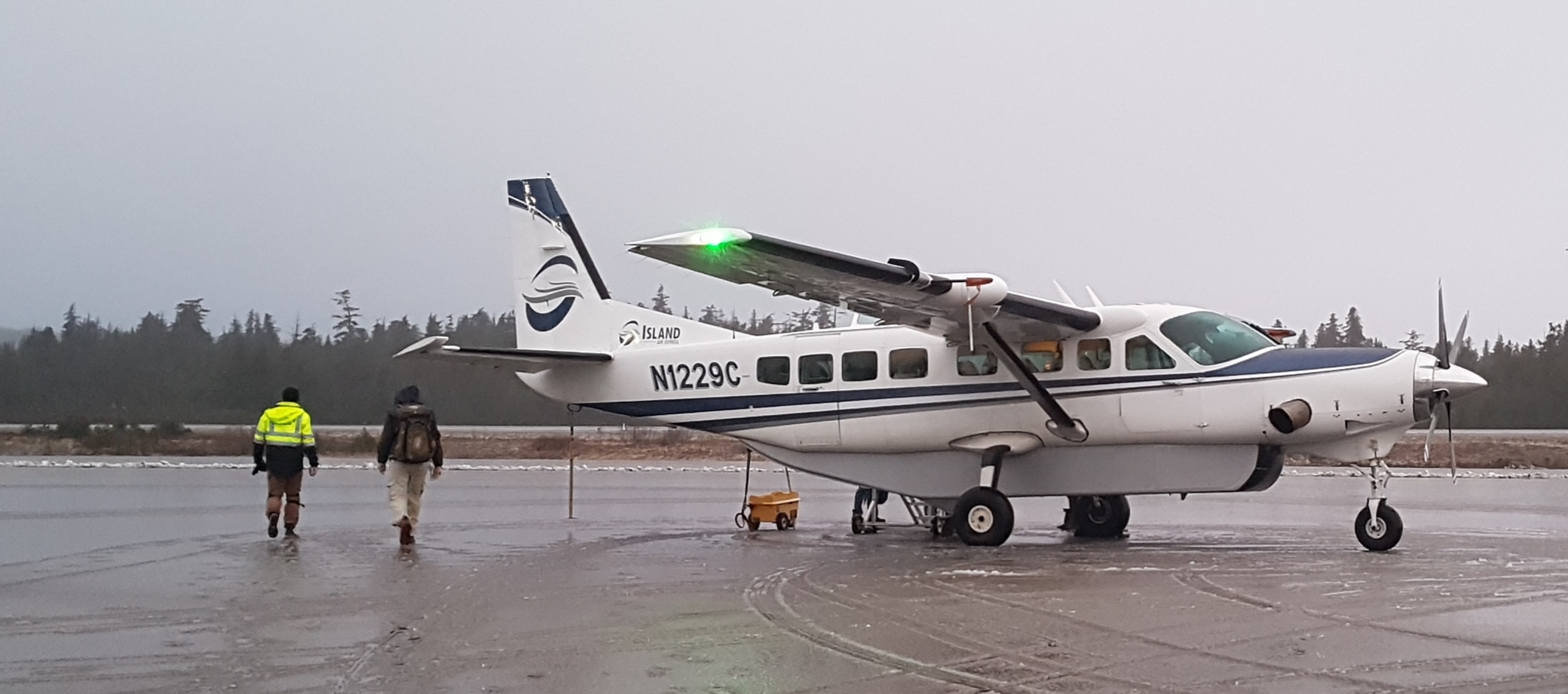
![]()
Caveat: Housier but not yet greener
The greenhouse has taken shape. There’s not much left to be done now on the structure. This picture is before we attached the door and roof-hatch (vent).
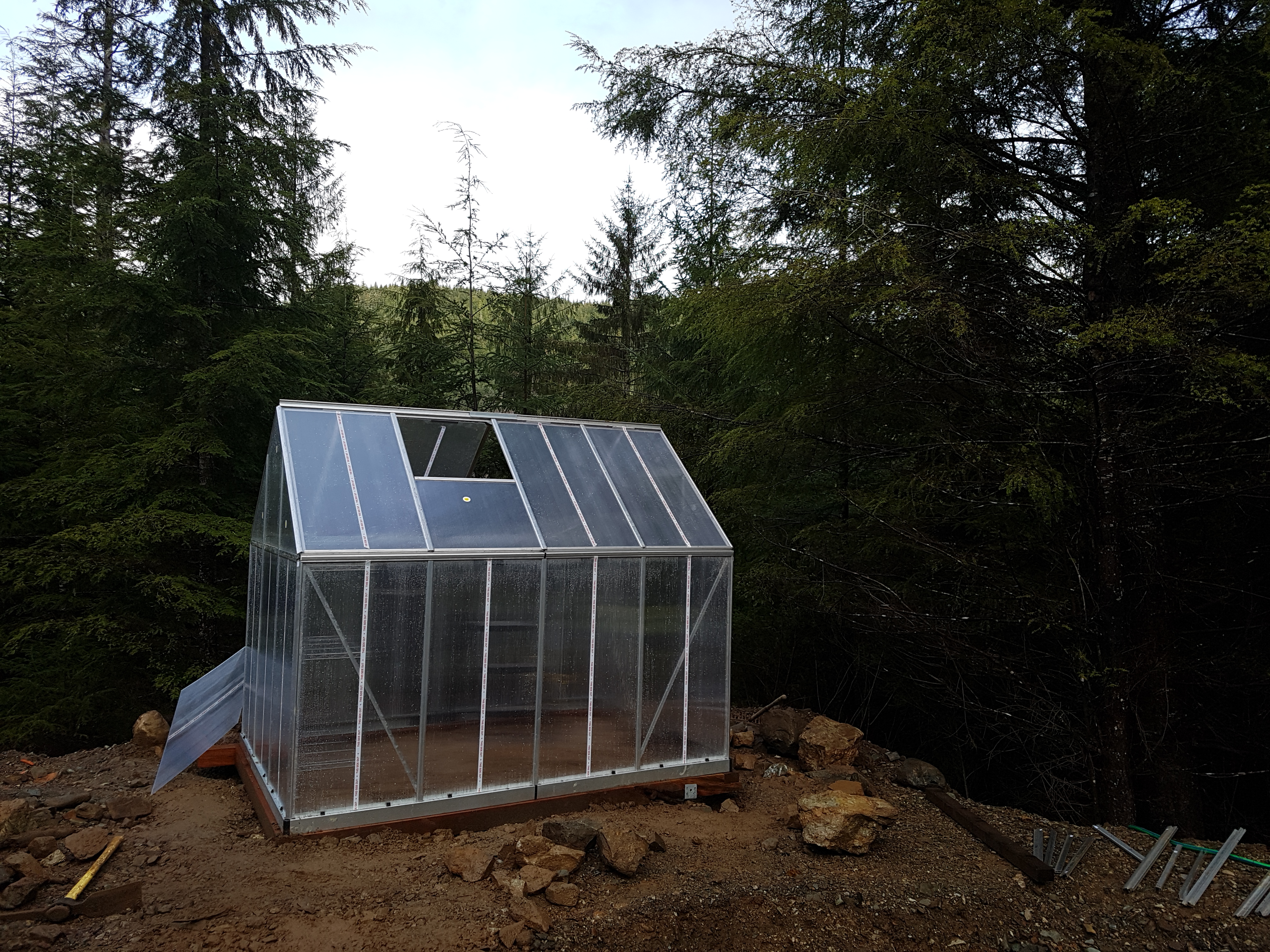
I have to start working on how and what I will plant in it. Andrew, Arthur and I went to Mike and Penny’s down the road for an early dinner, and Penny gave me a seed catalog and discussed some about her successes and failures with Southeast Alaska gardening.
I haven’t gardened much in my life, but I’m going to try this summer.
![]()
Caveat: Surprisingly Square
We finished the “foundation” for the greenhouse, this morning, despite chill, pouring rain and sleet. It’s really just a frame of cedar 4x4s laid at ground level on some concrete piers, but it should provide a level anchor for the greenhouse.
Once we’d got it in place, Andrew declared it “surprisingly square.” We then started to put up the pre-fab aluminum frame before giving up due to cold and wet.

![]()
Caveat: A beach day
My brother Andrew and I went to Kasaan. There is a totem pole park there – a kind of outdoor museum of native culture.
Kasaan is possibly my favorite place on the island. It being winter, the cafe and indoor visitor center was closed. But we walked among the totems, saw the old long house, and had a kind of impromptu picnic on the beach.
It was a nice day, though quite cold – I think about 36° F (2 C), and windy.
Here is Andrew on the rocky beach.
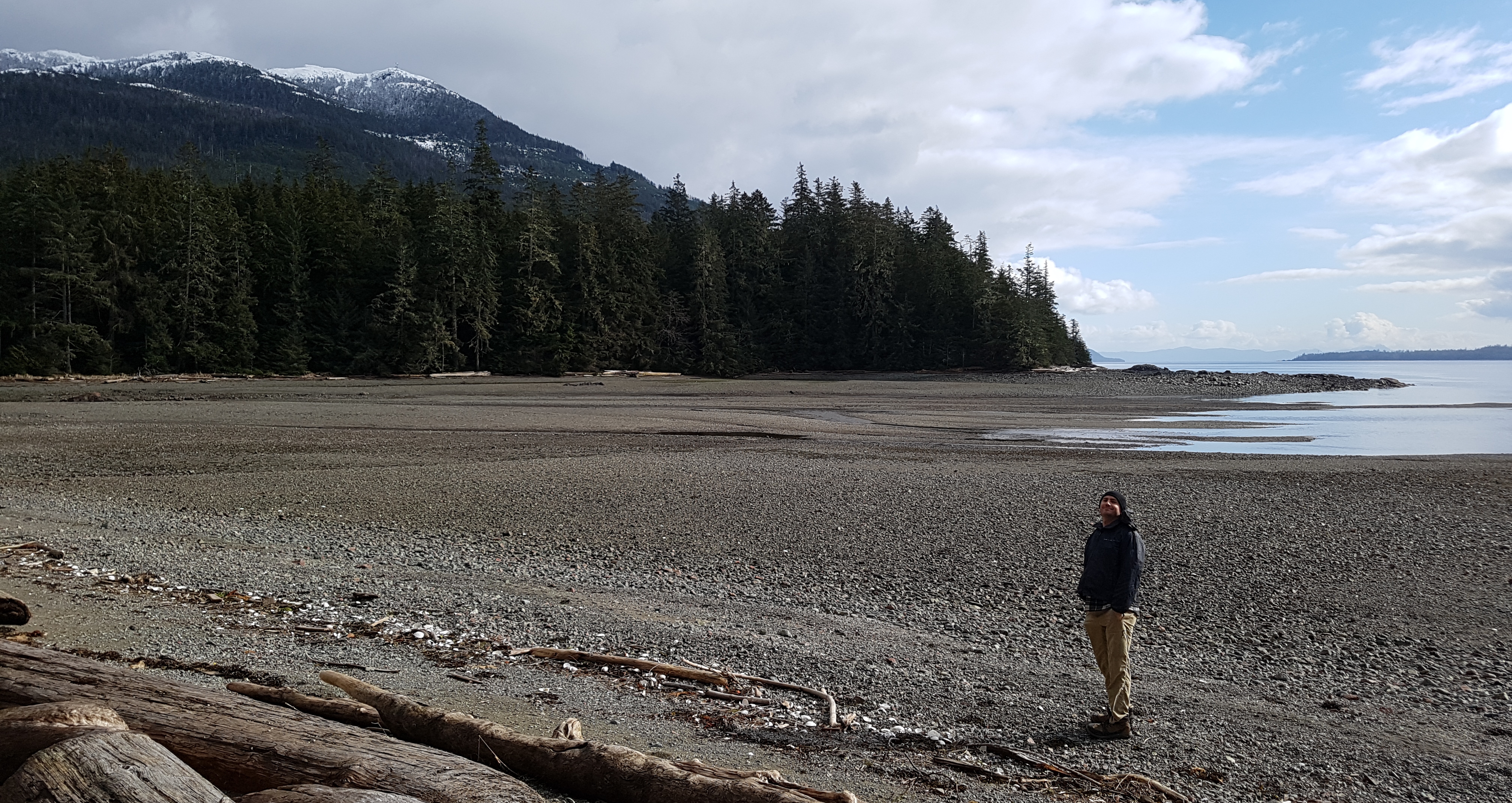
![]()
Caveat: greenhouse rising
My brother Andrew is visiting. I have a certain project I’ve decided to ask his assistance with – he has a much wider Alaska-appropriate skillset than I do, and is able to build things.
I bought a kit greenhouse a while back, because I want to have a greenhouse, here. The main building issue with setting it up is that it needs a kind of “foundation” to rest on – not a full structural foundation, but at least something to anchor it to the ground. That’s what Andrew and I are working on.
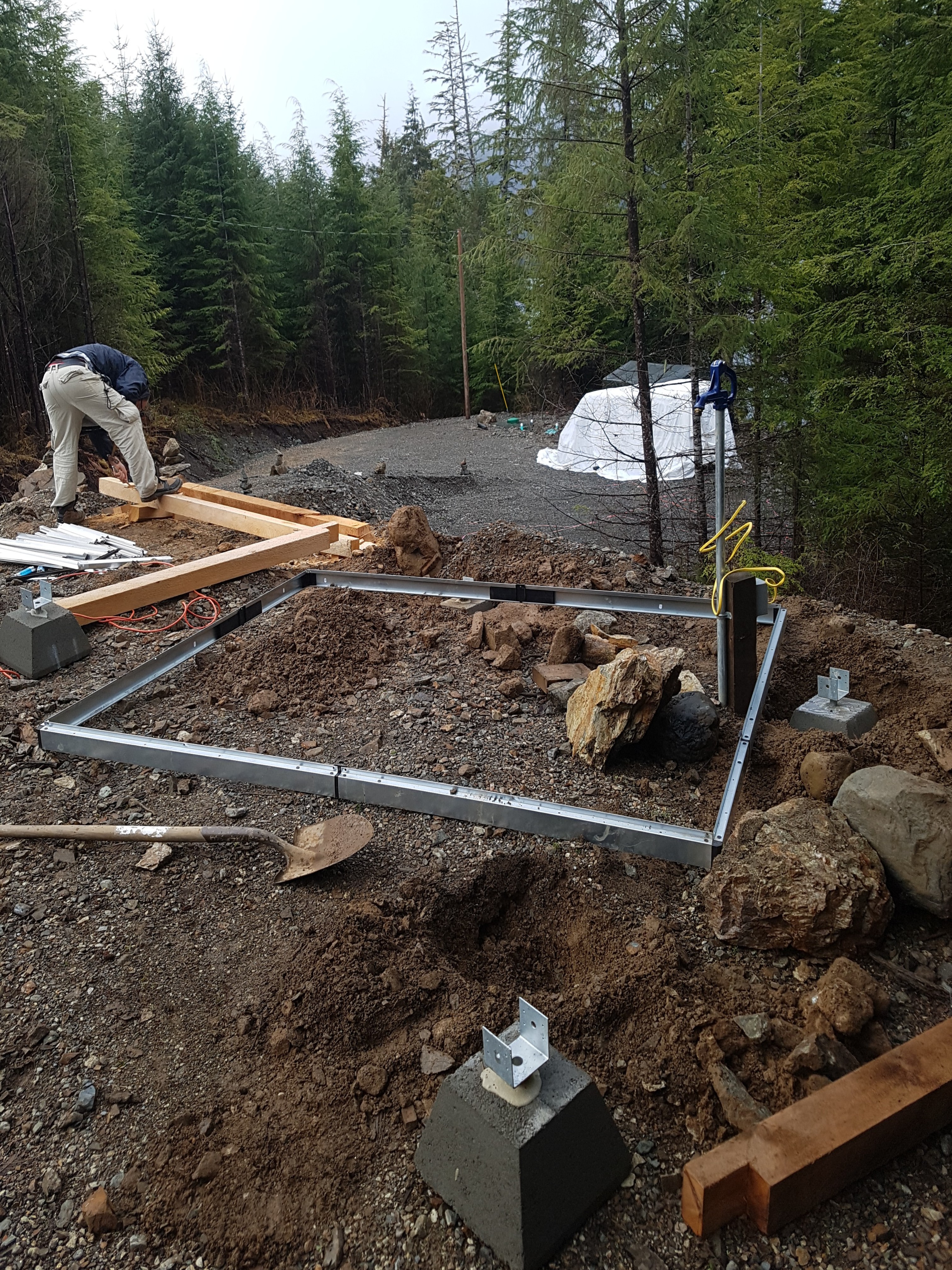
![]()
Caveat: Tree #420
My brother Andrew has come to visit for about a week. So I went to the ferry terminal to pick him up. Inside the ferry terminal, I saw this tree, made out of a… tree.
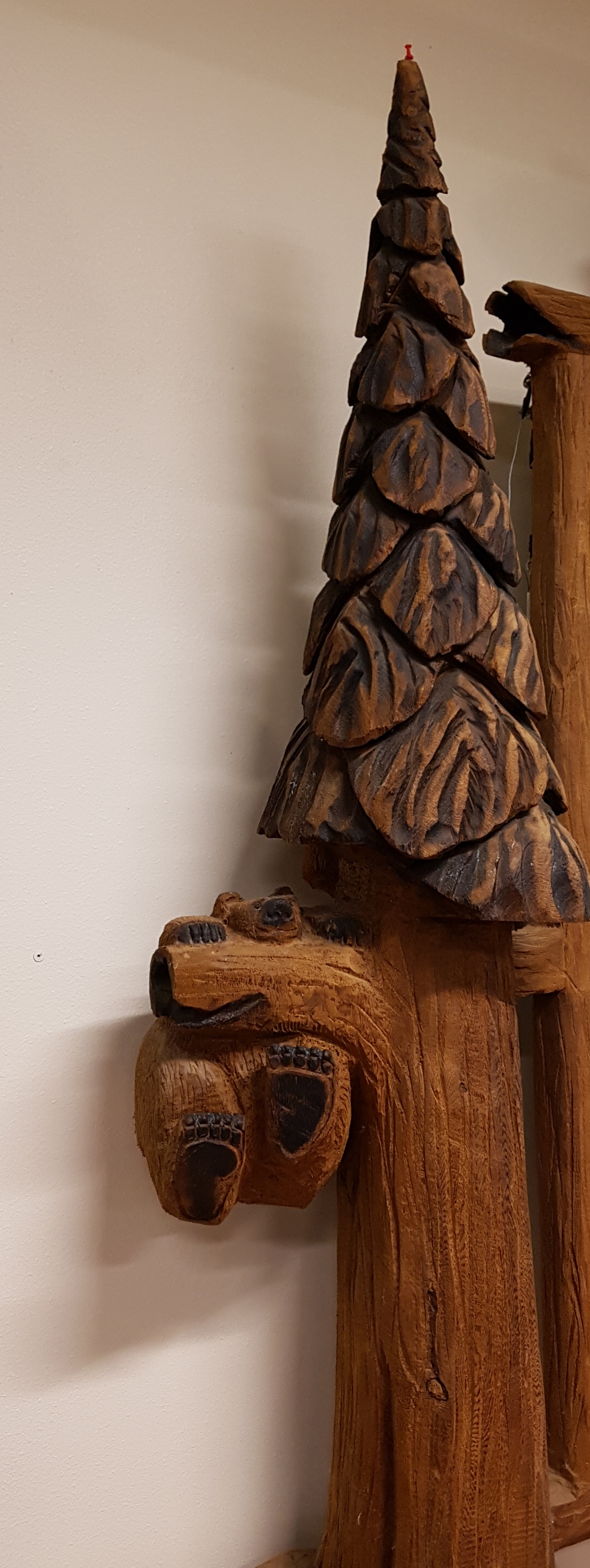
![]() [daily log: walking, 3km]
[daily log: walking, 3km]
Caveat: a poke in the eye from the left
I had a kind of insight, recently, thinking about the Democratic primaries that are now playing out. Contrary to most of the pundits I’ve seen writing about it, I believe that Bernie Sanders has a very good chance of winning both the nomination and beating our current Space Emperor. Why? For the same reason The Oleaginous One himself was able to win in 2016.
People voted for Orange Julius Caesar not because of any of his policy proposals (which were both largely incoherent and have since been mostly ignored), but because it was a “poke in the eye” at the status quo. And in fact I think there are just as many people – if not more – on the left who think this same way, as compared to those on the right. They’re just fed up with the status quo and would like nothing more than to give the powers-that-be a good kick in the pants. Bernie can win because he’s a kind of “Drumpf of the left.” This is not true of any of the other Democrats running – not Bloombie, not Buttigieg, not even Warren.
You see, Sanders is basically a grumpy old socialist. He’s wholly authentic, and if his election wouldn’t be a good poke in the eye at the status quo, from the left… well, then nobody’s election would be.
What I’m listening to right now.
King Crimson, “The Court of the Crimson King.”
Lyrics
The rusted chains of prison moons
Are shattered by the sun
I walk a road horizons change
The tournament’s begun
The purple piper plays his tune
The choir softly sing
Three lullabies in an ancient tongue
For the court of the crimson king
The keeper of the city keys
Puts shutters on the dreams
I wait outside the pilgrim’s door
With insufficient schemes
The black queen chants the funeral march
The cracked brass bells will ring
To summon back the fire witch
To the court of the crimson king
The gardener plants an evergreen
Whilst trampling on a flower
I chase the wind of a prism ship
To taste the sweet and sour
The pattern juggler lifts his hand
The orchestra begin
As slowly turns the grinding wheel
In the court of the crimson king
On soft grey mornings widows cry
The wise men share a joke
I run to grasp divining signs
To satisfy the hoax
The yellow jester does not play
But gently pulls the strings
And smiles as the puppets dance
In the court of the crimson king
Caveat: worth doing four times
I installed and uninstalled the new water pump (see yesterday’s blog entry) four times today, troubleshooting various leaks. On the forth install, it seems to be relatively leak-free, so Arthur and I decided to call it functional.
I enjoyed feeling competent to finally get it working.
But it was quite difficult and tiring, too. Out there in 32° weather banging on pipes:
1. Carry pump up to cistern shed.
2. Place pump on shelf. Attach hose, tighten clamps, repeat x 3 hoses. Bolt down pump. Test pump. Identify leaks.
3. Unbolt pump. Loosen clamps, remove hose, repeat x 3 hoses. Carry pump back down to workshop. Clean out threads, mess with fittings, reline all threads with teflon tape.
4. Go to step one.
Each loop takes about 2 hours.
![]()
Caveat: Unpumped
Early this morning, it seems, our water pump failed. This is the water pump that supplies the house with water pressure from the cistern, which catches rainwater from the hillside stream.
It’s not clear how or why it failed. It simply seems to have stopped being able to turn – the electric motor is only able to produce a kind of whining sounds as it attempts to spin its internal moving parts. Perhaps the motor itself is “frozen up” (i.e. not from cold – the temperatures are above freezing at the moment – but unable to move), perhaps there was some mechanical problem in the pump mechanism.
Regardless, this is a big issue.
Not as big as it could be, though. Firstly, Arthur has had, on hand, a “spare” pump.
So we spent the day first trying to diagnose the old pump’s problems, and subsequently trying to switch in the new pump. Both tasks proved frustrating.
The problem with the old pump is not clear. We were unable to even fully disassemble it. The pump housing is “stuck” to the motor, in some way we can’t figure out.
The new pump has its input and output holes positioned differently than on the old pump, which has the consequence that the pipe connections leading to it in the cistern shed need to be slightly rearranged. We ended up driving to town to the hardware store and getting some pieces, but even then, we weren’t really well-prepared for what we might need, and so we ended up improvising a bit to get all the pipes connected to the new pump. And then, the new pump was leaking. A lot. And it was getting dark.
Personally, taking the side of optimism, I think the problem is that we didn’t hook up our improvised pipe connections tightly enough, and we need take the new pump out, re-improvise, and reattach things more securely.
Arthur, for his part, taking the side of pessimism (of course), believes the pump housing on the new pump is cracked.
I’m going to try tackling my solution this morning. If that fails, and Arthur’s view prevails, we’re going to need a new pump. Updates will be forthcoming.
Here is the old pump, already removed from the cistern shed and waiting on the workbench in the shop for us to take on the challenge of disassembling it – which we have so far failed at.

Here is the new pump, already in place but not yet fully connected, while we sought out the pieces needed to get the pipes connected to it.

Meanwhile, we have improvised an alternate way to get water into the house. As was discussed on this blog last summer, we had a well put in (ostensibly for the western lot, #73, though there is some debate as to which side of the property line it ended up on). The well is not hooked up to Arthur’s house, on lot #74. But it’s there, and works, with a jury-rigged electrical supply going to the well controller hut (what we call the “doghouse” because of its size). So I ran a garden hose from the faucet I put in the western driveway across to a faucet in Arthur’s driveway. The well pressure comes through the hose, with both faucets open, and provides water pressure and well water to Arthur’s house. This temporary arrangement will work as long as the temperatures remain above freezing – which they currently have been.
Here is the hose off the well faucet. The “doghouse” is on the left, the western driveway’s faucet (which I installed last summer) is on the right.

Here is the hose connected to the faucet in Arthur’s driveway. I had to make a customized “female-female” length of hose to connect the hose to both faucets.

![]()
Caveat: documentation of my geofictions
Some of you might recall, I have another blog, besides this one. I maintain that blog mostly because this here blog is tied to my real-world identity, but I prefer to remain a little bit anonymous (obfuscated and pseudonymous more than truly anonymous) on the geofiction websites where I work and interact on what is really one of my main hobbies. I don’t post there very often – nothing close to daily, as I do here. A few times a month, on average. So this morning, I ended up writing a quite long entry on that other blog. It also has a number of included images, etc., so rather than reproduce it here (which would be complicated because my two blog platforms are truly independent, and I’ve got them configured quite differently), I’ll just give you a link:
Documentation of my geofictions, at blog.geofictician.net. Consider this to be my blog-post of the day, but off over on that other blog.
[UPDATE: On reconsideration, I’ll directly cross-post (cut-paste) that entry here following, for posterity’s sake.]
I was inspired by a recent bit of “OOC documentation” by the OGF user donnamaw (here) to discuss, if only in outline form, the real-life origin stories of my various geofictions. How and when did I invent, in my imagination, the various places that I have drawn (or attempted to draw) maps of? The order in which these places were drawn or introduced to geofictional spaces is not the order in which my mind created them. Here I’ll try to present them in the order in which they were first imagined.
Rahet.
Rahet is a planet. It has four main continents, which bear a reliable suffix meaning “continent,” -eye (pronounced as IPA /eje/). The history of Rahet is one of human colonists settling a desert planet and terraforming it over 1000’s of years. The terraforming process is frequently interrupted by squabbles among the factions that emerge, but nothing is stable, and few nations and groupings last more than a few generations. The technological level is high but unequally distributed – you have spaceships and artificial intelligent machines coexisting with spears and chariots. There is a particular faction, led by a machine named “Zon,” which keeps the terraforming project more-or-less “on track,” but often at the cost of moral clarity. All of this was developed in my imagination beginning around the age of 10. I was a bit precocious as a child, and by 10 I had read the Lord of the Rings, the Dune books by Frank Herbert, and numerous other pulp sci-fi works by authors such as Andre Norton, Alan Dean Foster, and Harry Harrison, among others. These types of works influenced my thinking about Rahet, and by age 12 or so I had a quite clear picture of the planet’s historical trajectory and some of the key elements of the culture. I began drawing maps early. Most were focused on the continent called Tsiqeye, which is where the earliest settlements were established, around a rock formation called Redithk Illim (which resembled in my imagination Wyoming’s Devil’s Tower, but much larger). I remember drawing out an outline of the continent with coastlines and major rivers at around age 11, taking it down to the photocopy store (such as life before scanners and cheap, high quality printers), and making a hundred “blanks.” I numbered them at 50 year intervals (thus covering 5000 years of history), and then drawing a series of historical maps for the nation-states, tribes, empires and other factions playing out Rahet’s complicated and intricate history. I wish I still had those maps. A few years ago I uploaded Rahet to my new geofictician server, but later deleted it, deciding I wasn’t ready to dedicate an entire server to the project. Here is a (sadly blurry) screenshot from that time when it was uploaded.
Rahet has remained a constant in my imagination ever since my pre-adolescent years. Note that the name is an anagram of “Earth.” Here is a map I found just recently, of the Rahet continent called Preye. I believe I was in high school when I drew this (early 1980s).
Ta Hre.
Ta Hre is another planet that was created around the same time as Rahet. It exists in the same universe, but rather than being an earth-like, terraformed planet it’s an airless moon, with people living in pressurized “cities” laid down in craters and canyons in the moon’s surface. I never really attempted to draw maps of the planet as whole, but I did draw many of these enclosed cities – often not just standard airplane-view maps, but also elevation diagrams of the various levels of the cities, since they were fully three-dimensional. Ta Hre is another anagram of “Earth,” of course.
Mahhal.
Mahhal is a few years younger than Rahet. I created it in high school. In fact, it started as two separate planets/cultures that I merged into one when I was in college. The first, which gave the name of the planet, Mahhal, was created as a kind of “antagonist” to Rahet. I had started trying to write a novel about Rahet, and I needed some “bad guys” so the novel would have a strong life-or-death conflict. I created the Mahhalians as an alien group who arrived at Rahet at some point and attempted to conquer it. They mostly failed, but they maintain outposts and fight occasional skirmishes with the Zon faction which works to protect Rahet’s independence. Over time, I created the Mahhalians’ background, including a conlang and ideas about their culture and planet. They are a kind of dystopian theocracy, but very high tech. They are humanoid (and in my never-completed novel, I leave as a kind of open mystery whether the Mahhalians are mutant humans or an unrelated species). They live on a world that is currently in an “ice age,” thus there are permanent ice caps on both poles and extending to about 40° latitude. Only the equatorial zones are habitable, but the Mahhalians have built vast, high-density cities, often protected by strings of giant domes across the landscape. The other geofiction, created at the same time, I called Pas Daons. It wasn’t a whole planet, but a country. In particular, I created the cities called Derindonderak and Askendom. In its first iteration, Pas Daons wasn’t a high tech or alien society. It was just a kind of alternate Earth, such as would fit in well on OGF today. I drew a detailed “city atlas” on paper of the city Derindonderak, and I still have clear visuals of the city’s layout, its topography, street plan, etc. However, by my second year in college, I’d “borrowed” Pas Daons to give more detail to my Mahhalians, and thus Derindonderak became the commericial capital of Mahhal, and I came to see Pas Daons as a “historical snapshot” of the more advanced Mahhalians. Rahet/Mahhal and the novel that was set there were abandoned when I moved to Mexico, and lay dormant until I attempted to resurrect Mahhal as an OGF archipelago in 2015. I had to make a lot of compromises with respect to my original vision for the Mahhalians – they had to be demoted from high tech, planet-controlling aliens to mediocre humans confined to a high-latitude archipelago. They retained their dystopian theocracy and conlang, however. At this point, I consider my effort to port Mahhal into OGF to be an abject failure. I became dissatisfied with the compromises I felt I’d been forced to make, and my hope to recreate the seething metropolis of Derindonderak (so vivid in my imagination) was disappointing. I retain a “rump state” version of Mahhal in OGF mostly to justify the existence of Tárrases (q.v. below) – and because I just like the name. It’s my oldest and most closely cherished imaginary name. Here is Mahhal as currently drawn on OGF (and link to boundary relation):
Rasf-sayan.
Rasf-sayan is another geofiction I developed in high school. In its first incarnation, it was a parallel-earth Caribbean island with a conlang meant to resemble a native American language. I modeled it socially and culturally on Haiti. I didn’t start a novel about Rasf-sayan, rather, I started an epic poem about a character named Aochra. He is fighting corruption and trying to save hopeless lives mired in poverty. He’s kind of a cross between “Blade” and Bob Marley. I drew lots of detailed paper maps of Rasf-sayan in high school, mostly focused on the main city, Poer-rasf-oa. At some point in college, I hijacked Rasf-sayan for my Rahet project. The hijacking was thorough and I don’t regret it. Rasf-sayan became an island on Rahet, in the sea between the continents of Preye and Sekieye. Rasf-sayan is mired in poverty because it is one of the pockets of Rahet controlled by the ruthless and inhumane Mahhalians. They have one of their space elevators anchored on the island, that allows them easy access to and from the planet. In the Rahet novel, the main character is trying to reach Rasf-sayan, because he needs to get off-planet. That’s his McGuffin that drives the plot. He meets Aochra, as a supporting character, and who is double agent – nominally working for the Mahhalians, but secretly allied with the Zon. Ultimately, any geofiction I draw of Rasf-sayan will be located and integrated to Rahet. Here is Rasf-sayan on Arhet, as of right now.
It’s barely started. But I retained it when I deleted the rest of Rahet and made it into Arhet (see what I did there?), because I thought I’d work on it at some point.
Ardisphere.
Ardisphere had a strange genesis. There is a novel by Vladimir Nabokov, entitled Ada. I believe there is a bit of geofiction (or at the least, alt-history) in that novel, since the Russians seem to control North America. An important setting in that novel is a place called Ardis Hall. I must acknowledge that that is the origin of the name Ardisphere. But… the imaginary country came after the name, by a few years. At first, I remember using the name Ardisphere for an early website I developed, as a kind of alternate identity where I would present my geofiction ideas or half-made novels. I made my first website in late 1994 (the web was only 2 years old at that time), on a thing called geocities – an early free website hosting service. I had a “professional” site that I used for my work at that time, and personal site, that was called Ardisphere. It was only a few years later, after I allowed the Ardisphere website to pass into internet history, that I started using the same name for an imaginary country. I had started a novel in which a group of refugees from earth, traveling in a sub-light-speed “generation ship,” arrive in another star-system with an earth-like planet, inhabited by a alien race that has a technological level similar to humanity’s. As refugees, the aliens decide to grant to the humans a few thousand square kilometers of mostly desert land they aren’t much using, to build their own refugee country. I drew a detailed map of Ardisphere. Since many of the refugees were from Latin America, most of the cities ended up with Spanish names. Hence Villa Constitución, Cerro y Casa, Puerto Desolado, El Cabo, Palmeras Grises. The names were such as I imagined a modern group of Spanish-speakers might apply to the alien planet they were colonizing while focusing on the ideals of their “new earth.” The novel was about a point in time about 100 years after the building of the settlement, at a point when aliens and humans have started to coexist in a hybrid culture. The novel, like all my novels, never reached any kind of finished state, but it included “Clarkean” magic (i.e. “any sufficiently high technology is indistinguishable from magic), criminal gangs from poor neighborhoods (the slums of VC), aliens engaging in conspiracies to control the humans they’ve welcomed to their planet, and humans doing the same in return, etc. The novel also has the seed of what later became the Cartographers and Cyclopedians – freemason-like secret societies that play a large role in the evolution of life in the country. Interestingly, in the original map of the Ardisphere, it was a peninsula. When I first stumbled across OGF in early 2014 and made an account, I took the only green country I saw at that time, AR025. That wasn’t a peninsula. But I’d already decided to make Ardisphere my first OGF creation. That was partly because I felt that, among all my sci-fi geofictions, it would be the easiest to adapt to the OGF “real world” style setting. I had to rearrange the geography completely to fit the peninsular Ardisphere of the novel into the oddly shaped, mostly land-locked territory in western Archanta. But I consider the adaptation to be successful: I cannot visualize Ardisphere at all in my mind now, without calling to mind what’s become the iconic shape of AR025. Since aliens weren’t allowed on OGF, and since I was living in Korea at the time, I made a spur-of-the-moment decision that my Ardispherian aliens would be Koreans. I don’t regret my decision. The Latin/Korean hybrid that OGF Ardisphere became is intriguing and has a lot of interesting cultural details. I am currently undecided as to the fate of the OGF version of the Ardisphere. One part of me still eagerly wants to complete (or more accurately, restart) the novel set there, with changes to “fit” the OGF setting. I see it as a kind of thriller/detective novel set mostly in VC, with travels to other OGF places – Jeongto, Tárrases, Ohunkagan, Gobras City… Further, It was only after embedding Ardisphere in OGF that I began imagining my characters might become aware they were in a geofiction, and begin manipulating it. This has given a great deal of new interest and impetus to whatever plot I finally come up with. Another part of me wants to restore the aliens and the high tech magic and re-draw Ardisphere on its own server, unconstrained by OGF’s strictures about verisimilitude. I also feel like removing Ardisphere from OGF because I’ve been so inactive with mapping there, and I feel it is not fair for me to occupy territory on OGF that I’m not actively working on. Here is Ardisphere as currently drawn on OGF (and link to boundary relation):
Lekista.
I started a novel in around 2002 which was set in a steampunk universe, but in which the main character was modeled on Augusto Pinochet, of all people. I had been reading Pinochet’s autobiography, and I had had this thought: “That is a seriously sociopathic dude. There needs to be a fictional version of him.” So the story was, roughly, parallel to Pinochet’s life, and written from his perspective, but through the book you realize that the protagonist is a brutal dictator and he’s not a reliable narrator. It’s one of those “psychopath as protagonist” books. I wanted to create a parallel Chile, as a place where the novel takes place, but I wanted to change the details enough that it wasn’t recognizable as Chile. So I made it a steampunk setting, and I created a somewhat alien culture. Instead of creating a conlang or using Spanish, as in Chile, I made what still feels like an inspired decision to “hint” at a conlang, but not bother with actually creating it. Thus all the place names in Lekista are “translated” into English. You have the country’s capital, Holy Brighthorse. Other cities such as Castlepass, Feast Mountain, Dogschild, etc. The names lend a bit of a native American feel to the story and setting, since a similar thing occurred with a lot of native names, especially on the Great Plains: Sitting Bull, Red Lake, Crazy Horse, Moosejaw, etc. Eventually I gave up on the novel. I found fake-Pinochet’s mind too uncomfortable to inhabit. But I was quite pleased with Lekista, and drew many paper maps of the country and its cities. In 2013 I drew a map, just a sketch, where Lekista was integrated to Rahet. So as of the present moment, Lekista is just one of the many hundreds or even thousands of polities that exist on Rahet. I think one of the things I like about Rahet is that its diversity allows it to “host” so many of my formerly independent geofictions. Here is Lekista in JOSM.
Senhar.
At some point while developing Ardisphere in 2015, I began thinking about Ardispherian religion. In the original, novelistic Ardisphere, religion and strange beliefs about psyche and the paranormal play a major role. But it’s largely “alien” and tied in with the aliens who intermingle in Ardispherian society. That was not an option for OGF Ardisphere. So since the aliens had become Koreans, it seemed logical for the alien religion to become … Buddhism. I created Gautamism as the OGF version of Buddhism, and made it the main religion in Ardisphere. Bear in mind that since the late 1990s, I myself have been a semi-practicing Buddhist, so this is not a stretch for me. In OGF-world, though, names must be changed. And source places, too. I invented Senhar to be the home of OGF Buddhism, and began drawing maps of it offline. It is meant to be an equatorial island nation, modeled on Sri Lanka (not the real home of Buddhism on earth, but an important nation for the historical development of the religion nonetheless). But in the center of the large island I placed an extreme highlands (over 5000m), which would allow me to also include an OGF Tibet. Thus Senhar is a Sri Lanka / Tibet hybrid country. Since I have zero competence in the Tibetan and Sinhalese languages, I decided to go the conlang route, and invented a Senharian language that would be a bit based on Korean (which I do know) but written using Tibetan characters. Here is a screenshot of Senhar from JOSM, which is where it exists for now, with incomplete contour work.
If anyone ever creates an OGF India, it would be my intention to petition admin, at that time, to allow me to place the island of Senhar off that country’s coast.
Tárrases.
I created Tárrases exclusively because I felt I needed to try to make a microstate where I could focus and develop my mapping skills using JOSM and OGF. I wanted something I actually could “complete” in a reasonable amount of time. Secondarily, I wanted a place where I could allow my two main OGF societies to “meet.” Hence Tárrases was inspired by Spanish (Ardispherian) and Mahhalian cultures. I placed it as a libertarian enclave in dictatorial and theocratic Mahhal – a kind of Macau or Hong Kong to a Mahhalian China, in a geopolitical sense. I believe Tárrases is my finest and best-developed geofiction to date – exactly as it was intended. I’m very proud of it. As I was mapping it, I thought a lot about what kind of culture it was. I wanted something with maximal contrast to Mahhal’s rigidity, so I settled on a kind of libertarian-anarchist state. In fact, I was inspired by Tamarindia, which I pointed to at the beginning of this write-up. Tárrases was founded by pirates, who “stole” a Castellanese colony by making an unholy alliance with the Mahhalian aristocracy. They went “legit” and the Carapreta Dynasty, founded by the pirate Omar, has survived for over 200 years. Here is Tárrases as currently drawn on OGF (and link to boundary relation):
Kshang.
I still believe in this project, but I’ve negected it hugely. I would someday hope to resurrect it in a more hospitable setting than hapless Rhododactylia. The
Kshang are imagined as a parallel to one of the many ethnic groups in South Africa (since I’d decided somewhat arbitrarily that Rhododactylia was a kind of OGF South Africa, maybe). I think in fact the Kshang began as a conlang, and the geofiction came later. It’s possible that I had a conlang that looked like Kshang even in high school. And I remember sketching maps for them, too, but they weren’t very detailed. It was meant to be a pre-modern society. But I know Kbloniksbhag (Bone House) was the “capital,” such as it was. I spent more time developing the Kshang religion and culture, and thinking about life in a traditional Kshang village. I think my effort to place the Kshang as a major ethnic group in Rhododactylia was a failure – mostly because I lost hope of that country ever being in any way a coherent geofiction at all. They need a home of their own, a little OGF Botswana or something. Here is Kshang as currently drawn on OGF (and link to boundary relation):
Bofobunda.
I invented Bofobunda in 2016 (I think) at a point in time when I was thinking of a way to make West Commonia culturally interesting, in the way Gobrassanya is interesting. I had orchestrated the “divorce” of West Commonia from Commonia, and so I had intended to place some mapping there. I wanted a stand-alone project, so I created the Bofobundans. I got distracted by their language and culture, something vaguely southeast Asian but with a conlang written with the Farsi (modified Arabic) script. So I never uploaded any of the mapping to West Commonia. And I’m glad I didn’t – someone would have surely destroyed it beyond recognition by now. I “rescued” the Bofobundan culture from obscurity by placing them as a small minority in Ardisphere, with a concentration of population at the city of Lagartopolis, where they have a large, famous mosque. I would like to work on that more. Their home country remains unmapped. Here is the capital of Bofobundah, the city of Zhebeyem. This was my first experiment with contours and maperitive – a largely failed experiment.
Makaska.
Makaska is my newest OGF project. Currently, I view its success as second only to Tárrases, and on a much larger scale. Unlike Tárrases, it’s far from finished. Like Tárrases, I think Makaska has been successful partly because I created it for OGF. It’s OGF-specific, and thus I don’t feel any regrets about editing out any formerly existing inverisimilitudinous elements, due to OGF’s rules. Once I’d kicked off the FSA project, I began thinking about how I could participate by taking on my own state, on the principle of “lead by example.” I wanted to make an exemplar FSA state. My thoughts turned to my years living in Minnesota. I had studied the Dakota language in college, there, and since I wanted my FSA state to have a strong “native” presence, and I wanted it to feel authentic, an OGF Minnesota seemed logical. I pulled out my trusty English-Dakota dictionary from college, and got started making up names. So far, I’m happy with it. It’s a work-in-progress, and is my main “active” geofiction, right now. Here is Makaska as currently drawn on OGF (and link to boundary relation):
Deadlands.
The Deadlands is not the same as the other geofiction projects, above. The background is that for a while while living in Korea, I resurrected an old habit I had from the late 1980s – I started playing MUDs (text-based computer role-playing games). But when I started maintaining my own Linux server in 2016, I went further. I decided I should build my own MUD. So I started to. It’s currently offline, regrettably. It’s called Hellbridge, and it’s a post-apocalyptic/fantasy hybrid that takes place in an inverisimilitudinous setting called The Deadlands. Here is a screenshot of the Hellbridge MUD login.
My intention was to actively integrate the OSM-style slippy map with the game, so that players could follow their progress in the game world with a marker on the website map. So I have been experimenting with non-standard tagging of nodes that I could tie into the MUD database through some kind of customized database procedure, such that a character’s “current location” could be tied to a pin on the map, google-maps style. Here is a map window (leaflet) with a test marker, showing the map-in-progress of the village of Goodgrove – intended to be one of the “starter villages” for new characters exploring the Hellbridge universe.
I don’t know what made me write all this, just now. Perhaps I grew tired of typing out the same explanations over and over on the OGFC Discord, or in conversations in the OGF Forums and diaries. So now I can just point people here. I might add to this write up with more detail over time. Music to do meta-geofiction to:
Caveat: v-truck
Our nearest neighbors, Mike and Penny, are down the road about a half a mile.
Penny has a hobby of making three-dimensional pop-up greeting cards. She uses colored cardstock paper and some kind of computer-controlled cutting device. The last time we visited there, she was showing off her hobby. She’d said, “I’ll send you guys one, sometime.”
She sent us a Valentine’s Card. It is a red “Valentine’s truck.” Only in Alaska.
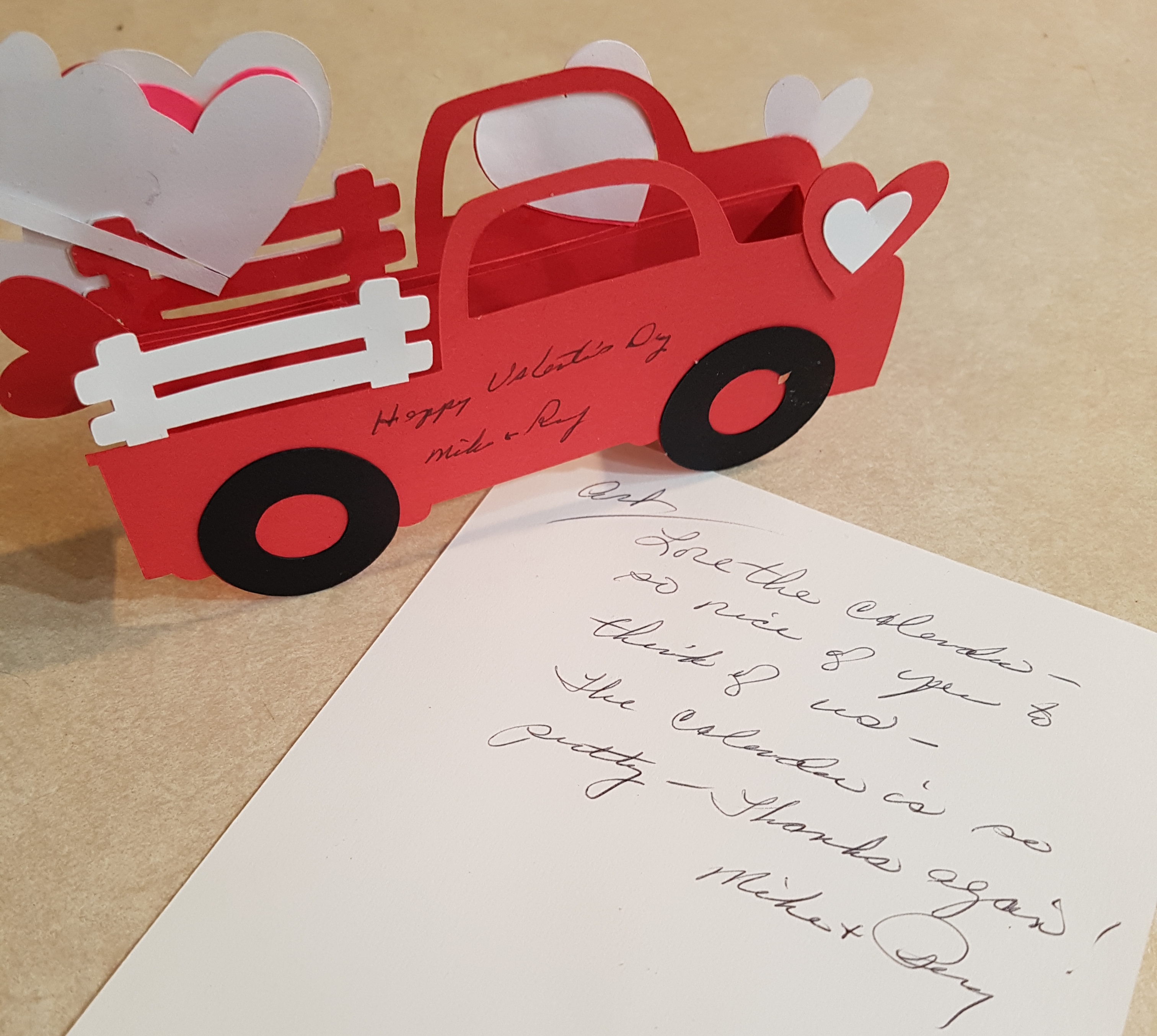
![]()
Caveat: rootless
Sometimes I work on my server. I have been trying to automate the map-rendering job for the geofiction site I built, that until now I’ve had to run manually. The problem I ran into comes down to permissions. Who knew that even the infamous Linux ‘root’ user is sometimes not the right person for the job? Emphasis added to the excerpt of the log file, below.
... INFO: Total execution time: 16621 milliseconds. Stopping renderd (via systemctl): renderd.service. osm2pgsql version 0.95.0-dev (64 bit id space) Using lua based tag processing pipeline with script ~/src/openstreetmap-carto/openstreetmap-carto.lua Using projection SRS 3857 (Spherical Mercator) Osm2pgsql failed due to ERROR: Connection to database failed: FATAL: role "root" does not exist ...
It took me all day to figure this out. Not that I was working on it, exactly. Art and I went to town, did our shopping, came home, ate dinner. All the while, I was cogitating on this problem, and how it matched up with the results I was(n’t) seeing. And then, sitting there, it clicked.
These are the more pleasing moments of computer work – when a seemingly intractable problem presents itself and you work it through in your mind and you solve it. After it clicked, I came and opened the log file and saw the error, above, and it was an easy fix to the bash script.
![]()
Caveat: Tree #402
This tree (which tree?) has the mountain across the inlet as its background.

I saw this chunk of snow eroded by rain into an unusual shape, so I placed it on top of a wooden post and took a picture. I call it “snowcritter.”
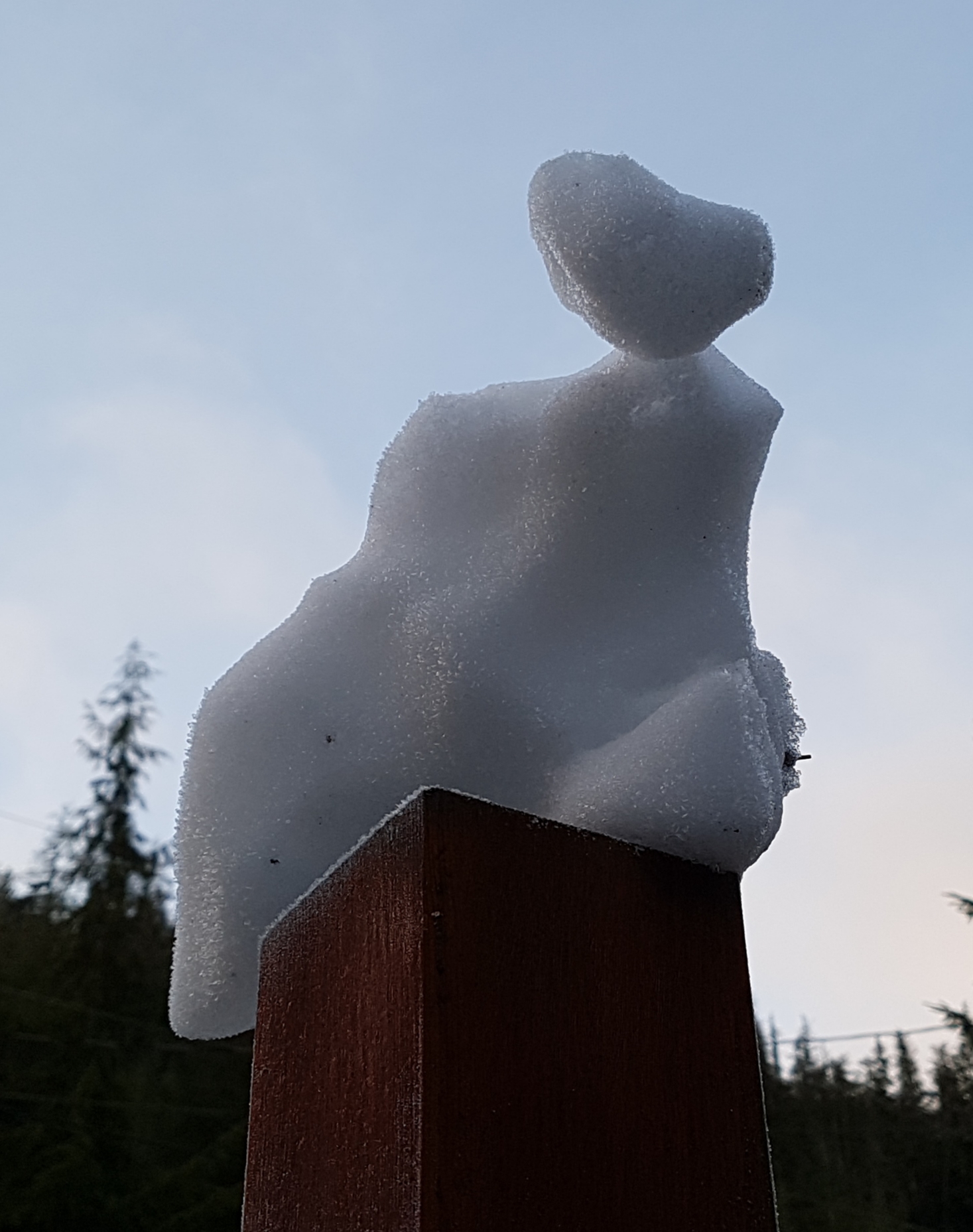
![]() [daily log: walking, 1.5km]
[daily log: walking, 1.5km]
Caveat: life is more than who we are
Arthur and I were in town, for our weekly Thursday shopping trip. This song came on the radio at Zat’s Pizza, where we almost always stop for lunch on our Thursday trips. Art doesn’t think much of the music there – he just tunes out and listens to his audiobooks. But I sometimes end up a bit nostalgic, as the music is often set to some “oldies” station. Music from particular eras in my life can end up being quite evocative.
I don’t know that I necessarily liked this song in any deep sense. But it was part of my “soundtrack” in 1995, when I was working nights at the UPS Package Sorting facility in Northeast Minneapolis and doing some graduate coursework (non-degree program, at that time) during the days. It was when Michelle and I were already married but still keeping it to ourselves, and living together in south Minneapolis, just off Franklin Avenue.
My commute up I-35W (across the bridge across the Mississippi that later famously collapsed from poor maintenance killing many people) to the UPS facility took about 30 minutes. So I would play the radio. And this was one of those songs on high rotation at that time. Since I was working the late shift, I would end up coming home during very low traffic at around 3 or 4 AM. The freeway was often completely empty.
So I ended up feeling nostalgic when I heard this song. It’s a very 90s song.
What I’m listening to right now.
Goo Goo Dolls, “Name.”
Lyrics.
And even though the moment passed me by
I still can’t turn away
‘Cause all the dreams you never thought you’d lose
Got tossed along the way
And letters that you never meant to send
Get lost or thrown away
And now we’re grown up orphans
That never knew their names
We don’t belong to no one
That’s a shame
If you could hide beside me
Maybe for a while
And I won’t tell no one your name
And I won’t tell ’em your name
And scars are souvenirs you never lose
The past is never far
Did you lose yourself somewhere out there
Did you get to be a star
And don’t it make you sad to know that life
Is more than who we are
We grew up way too fast
And now there’s nothing to believe
And reruns all become our history
A tired song keeps playing on a tired radio
And I won’t tell no one your name
And I won’t tell ’em your name
I won’t tell ’em your name
Mmm, mmm, mmm
I won’t tell ’em your name, ow
I think about you all the time
But I don’t need the same
It’s lonely where you are, come back down
And I won’t tell ’em your name
Caveat: using the free wifi at Starbucks
I have in my life gone to Starbucks mostly to use the free wifi.
This was especially true before I went to Korea in 2007. Starbucks rolled out their free wifi quite early relative to other businesses, so I remember using the free wifi at Starbucks while on various trips in the mid 2000’s.
Apparently, using the free wifi at Starbucks is still a thing in 2019. And apparently the FBI does it, too.
This article (link) on the emptywheel blog describes how the FBI used the Starbucks free wifi to download leaked documents about CIA hacking. Interagency cyberwarfare conducted over the airwaves while enjoying a nice nonfat soy latte.
![]()
Caveat: Tree #396
The sun appeared.
This was unprecedented, so I decided to take a walk down the road. Arthur came along.
This tree has appeared before, here. But now it’s been winterized.
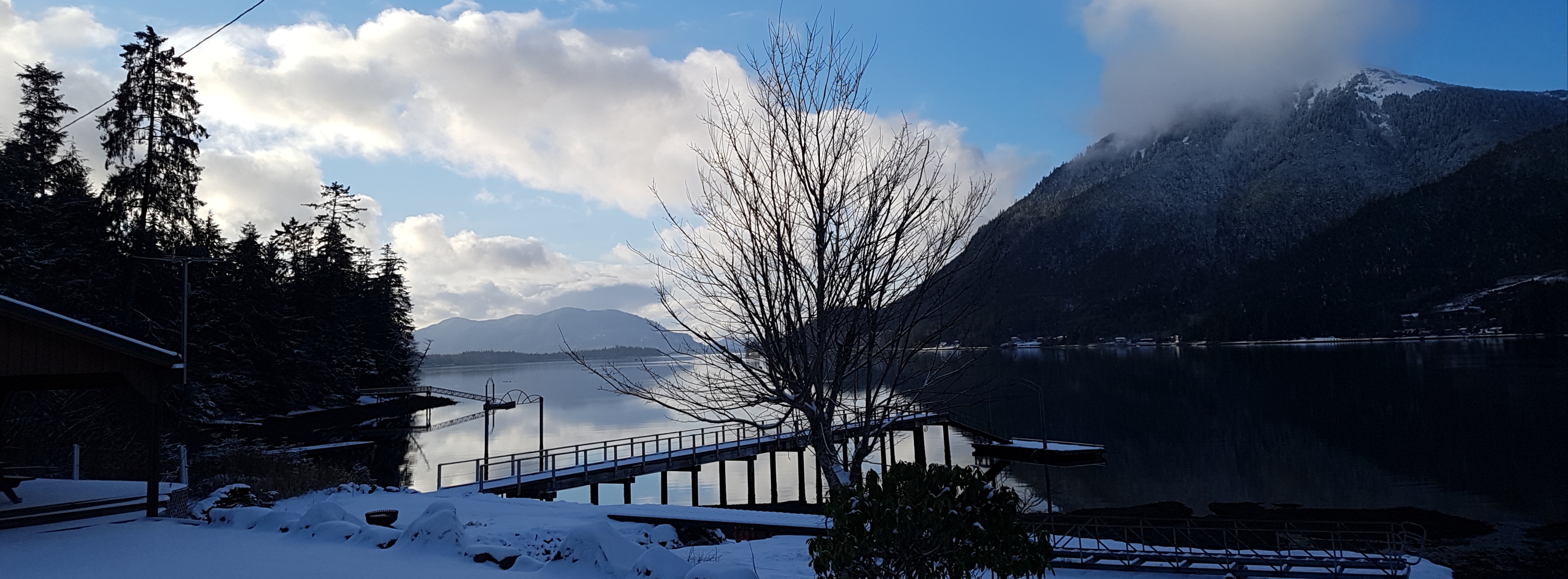
Walking along the road, we ran into our neighbor Mike, out walking the dog. He’s a little bit hard to see: center of the road, a bit behind the dog.

![]()
Caveat: The Superb Owl
Today is Superb Owl Sunday – when people throughout the US and all over the world contemplate the fine owls they’ve seen.

I remember how weird it seemed to me, living in Mexico City in 1986, the way that the city seemed to grow so quiet and shut down because of the football game to the north. In fact, I learned that American football is shockingly popular in Mexico. I’ve always thought that Mexico City would be a smart place for an expansion team.
Unrelatedly…
Today’s date is a palindrome, regardless of your preferred format.
Do you like MM/DD/YYYY? Palindrome, check: 02022020
Do you instead prefer DD/MM/YYYY? Palindrome, check: 02022020
Or, like me, do you prefer YYYY/MM/DD? Palindrome, check: 20200202
When will this happen again? Far, far in the future.
![]()
Caveat: Too many projects, not enough motivation
[This is a cross-post from my other blog.]
There are many things I could be working on, geofiction-wise. I was chatting on the OGF Central discord channel a few days ago, and managed to enumerate 9 different ongoing geofiction map-drawing projects, all essentially unrelated.
- OGF / Makaska
- OGF / Tárrases+Mahhal
- OGF / Ardisphere
- Arhet / Deadlands+Hellbridge
- Arhet / Rasfsayan
- JOSM Only / Lekista
- JOSM Only / Tsiqeye+Preye+Domeye+Sekeye (4 continents of a planet)
- JOSM Only / Bofobunda+Zhebeyem
- JOSM Only / Senhar
All of these above-listed projects are basically not moving forward at all.
Meanwhile, I also feel that I should be working on things like upgrading and/or completing the deployment of my map server (currently called Arhet). I also wish I had the energy to develop my expertise in the realm of getting contours working on Arhet, as they do on OGF. I won’t be happy with my own server environment until I’ve solved that.
But I have zero motivation, lately.
Anyone have any motivation to spare?
Music to motivate by: Taylor Swift, “The Man.”
